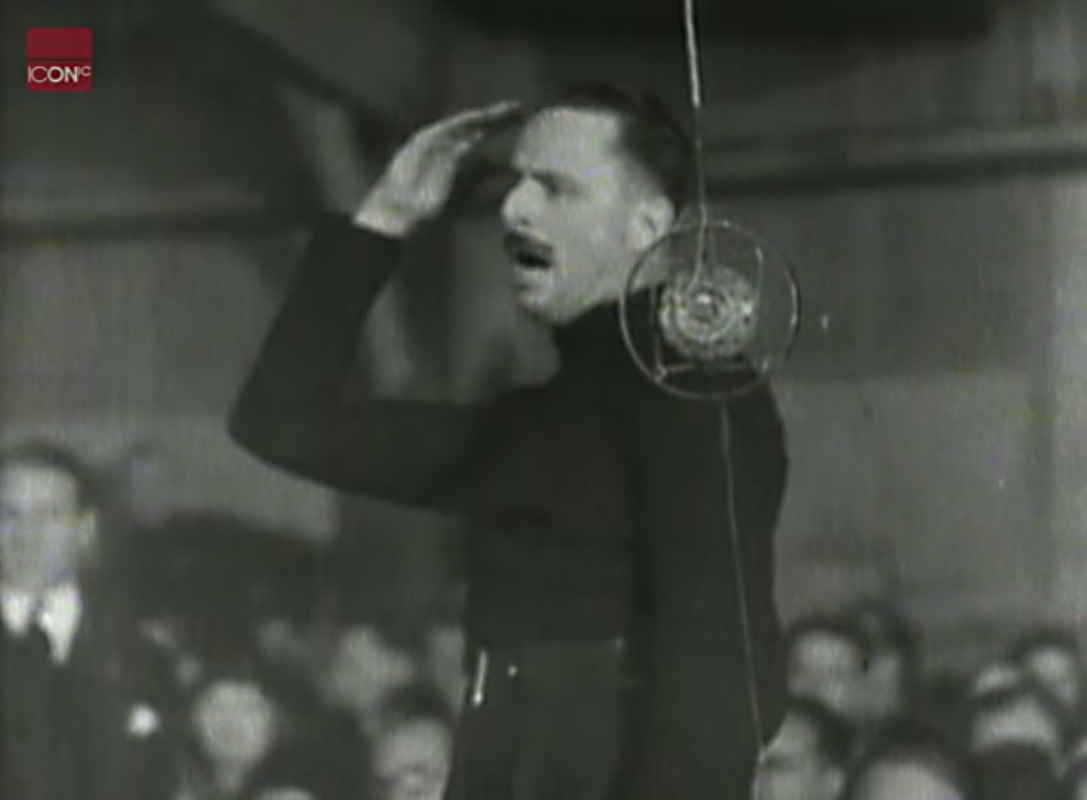 "He who in his heart purposes to raise a mutiny and thereby breaks loyalty, breaks faith, breaks sacred pledges, he can expect nothing else than that he himself will be the first sacrifice. I have no intention to have the little culprits shot and to spare the great criminals. It is not my duty to inquire whether it was too hard a lot that was inflicted on these conspirators, these agitators and destroyers, these poisoners of the wellsprings of British public opinion and in a wider sense of world opinion: it is not mine to consider which of them suffered too severely: I have only to see to it that Germany's lot should not be intolerable."
"He who in his heart purposes to raise a mutiny and thereby breaks loyalty, breaks faith, breaks sacred pledges, he can expect nothing else than that he himself will be the first sacrifice. I have no intention to have the little culprits shot and to spare the great criminals. It is not my duty to inquire whether it was too hard a lot that was inflicted on these conspirators, these agitators and destroyers, these poisoners of the wellsprings of British public opinion and in a wider sense of world opinion: it is not mine to consider which of them suffered too severely: I have only to see to it that Germany's lot should not be intolerable."-O. Mosley, 10 July 1929.
March comes in and the
Admiralität engages their strategic plans for the near future. The ships that were damaged in the battle are shuttled into the massive drydocks of the Baltic German harbours; and the German
U-Boote are let loose against the British merchant traffic. Mosley's Brits have insituted a long-range blockade, taking advantage of the temporary unavailability of the German battle-line; but Germany has sufficient provisions to see her through at least six months of such a blockade. By the time their stockpiles run dry, the Germans are confident they will have caused a dent to the Grand Fleet sufficient to break the net.
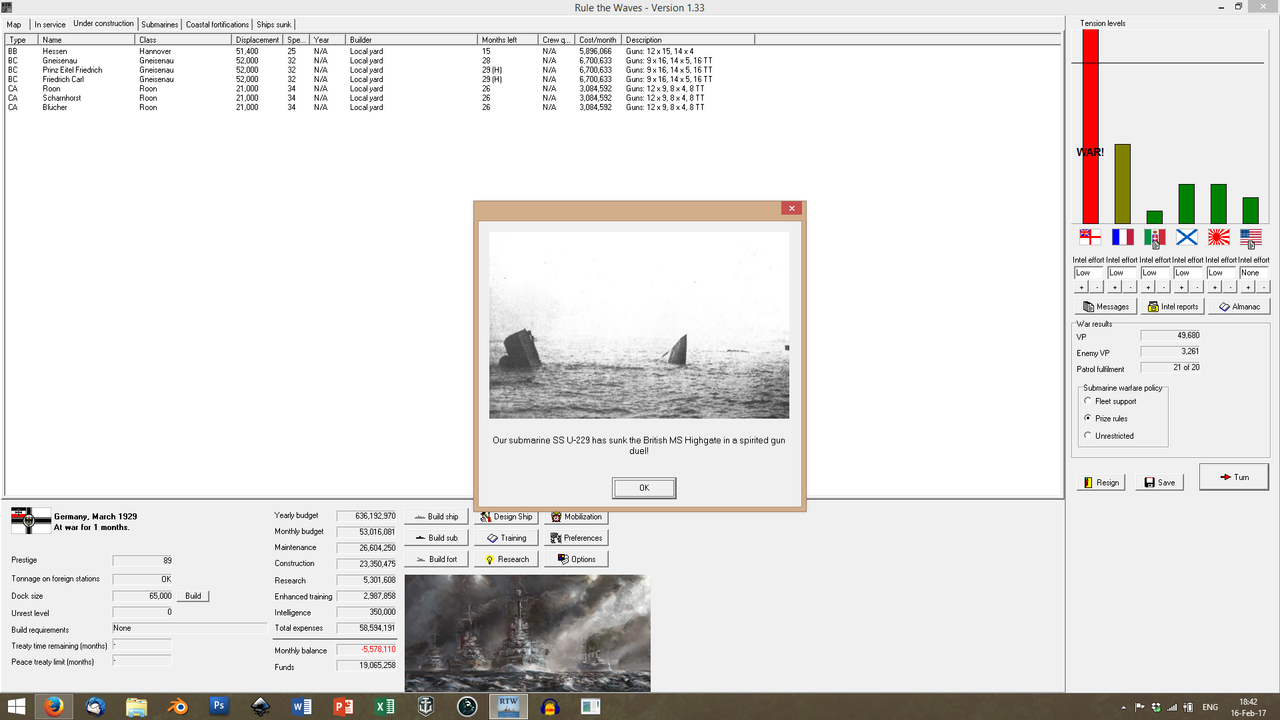
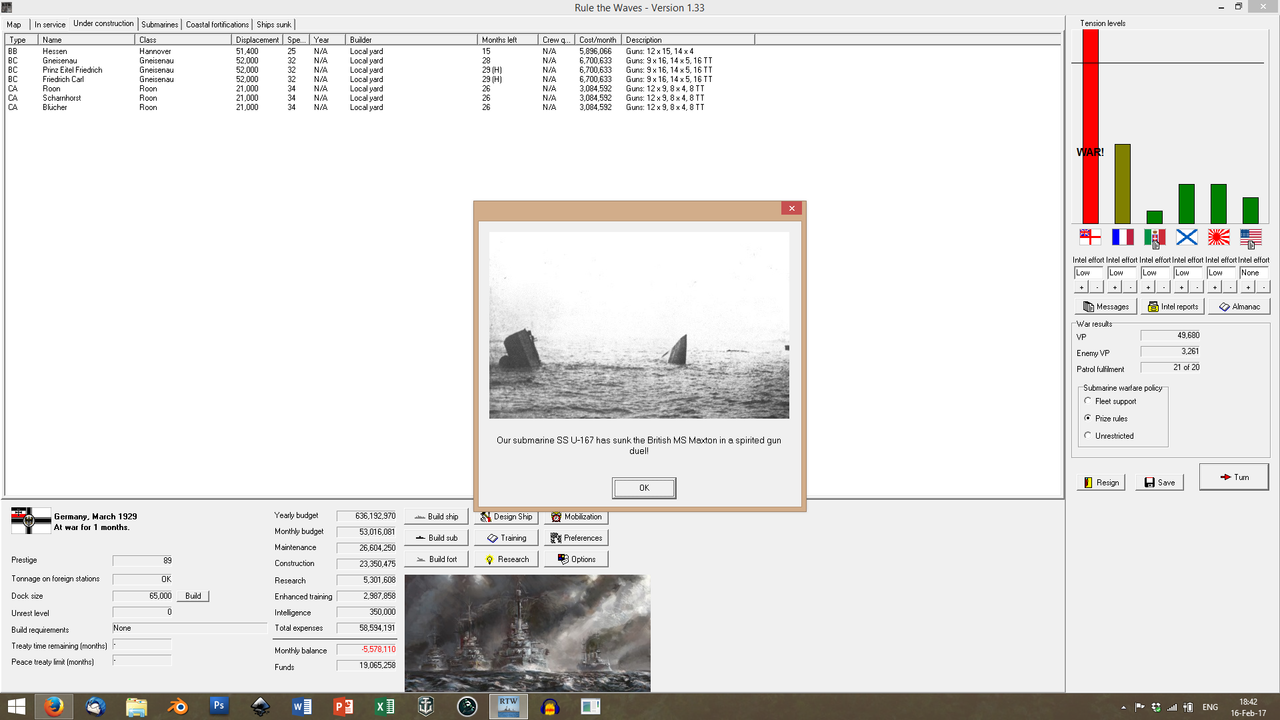
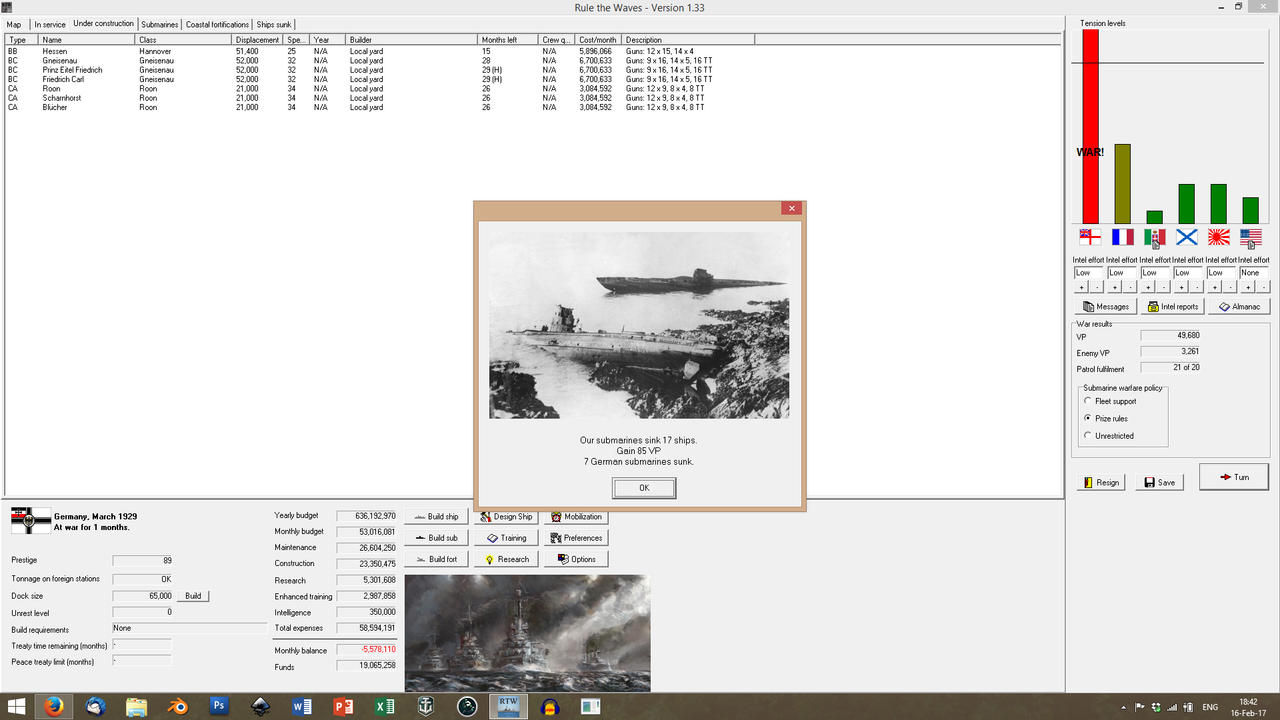
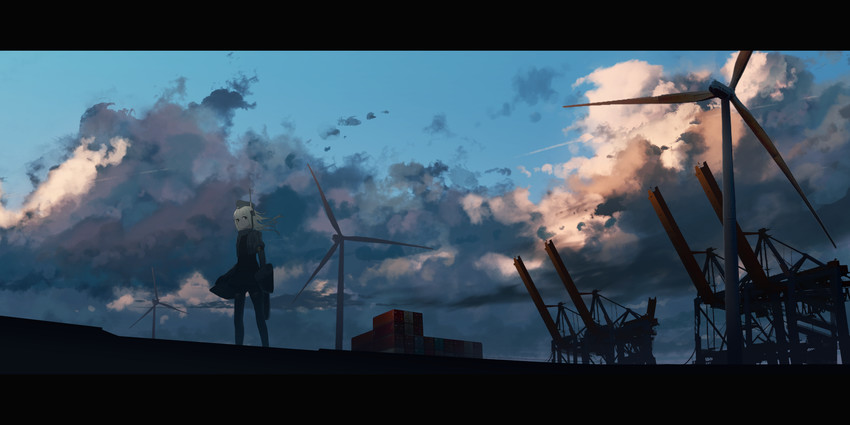
Meanwhile, the Germans have their own ways to wring the Brits dry. The
U-167 and
U-229 probe the Commonwealth coastal defenses near the Isles and near New Zealand, respectively; they both manage to isolate and sink (with gunfire, no less!) British coastal patrol craft.
Their reports on British convoys and ship movements help the rest of the German boats organise their own offensives. By the time the
U-bootkommando has finished assigning them their hunting grounds, mid-March has come and gone; however, the German submariners still score 17 confirmed kills within fifteen days. That's nearly 150ktons in merchant tonnage. Their own casualties are relatively severe, however, with more than seven boats lost. Maintenance problems are brought to the fore and doctrine shifts, to better match British ASW tactics.
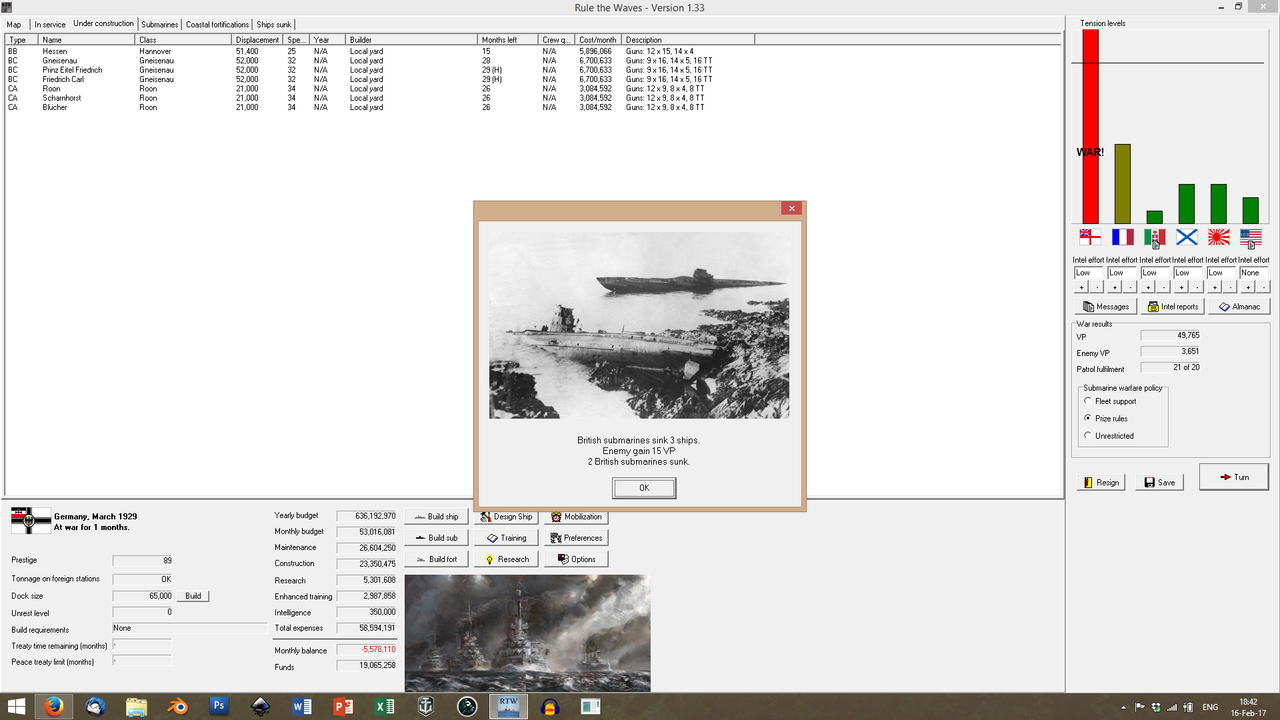
In return, the Brits enjoy very limited success. German merchant traffic is nigh-nonexistant, due to the blockade; the British only score three kills, and lose two of their subs in the process.
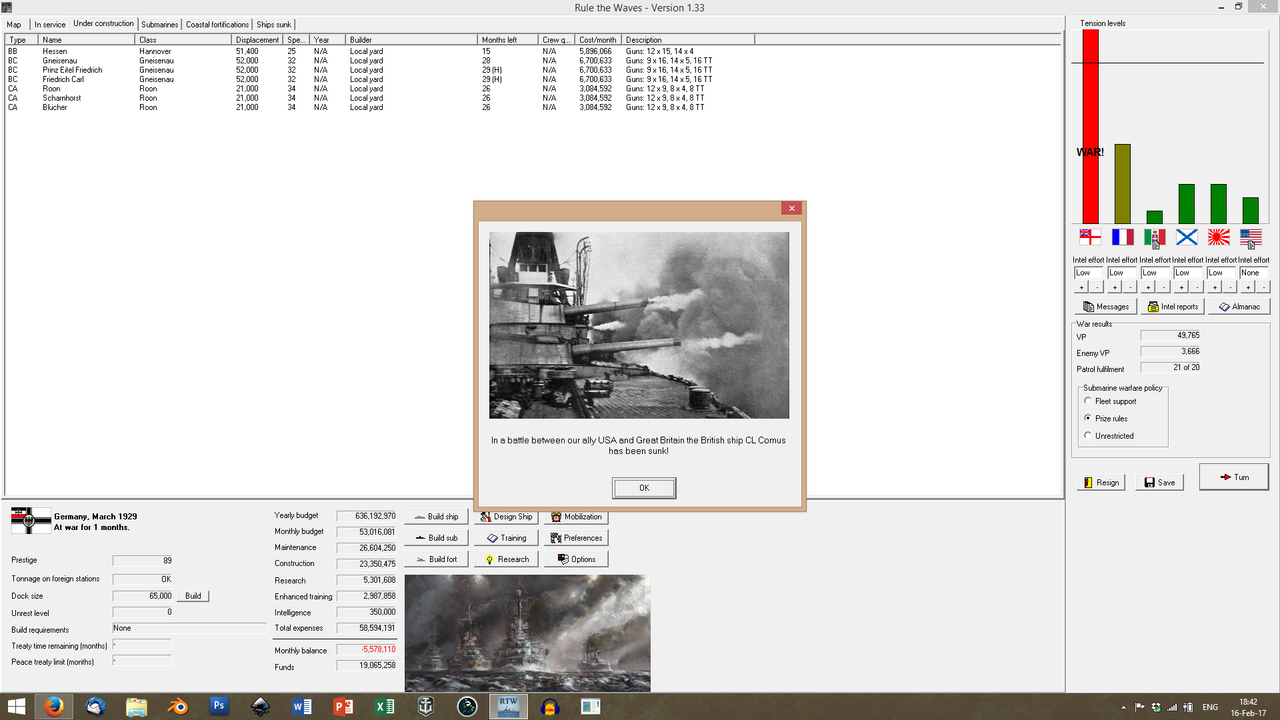
To add insult to injury, the Americans begin jockeying in preparation of an invasion of Canada. It would be folly attempting it before at least April, but the USN begins to test the waters of the Canadian west coast, to the south-east of Alaska. In one of these forays, the heavy cruiser
USS St Louis engages the
RCN Comus and sinks her after a 45-minute gunnery duel.
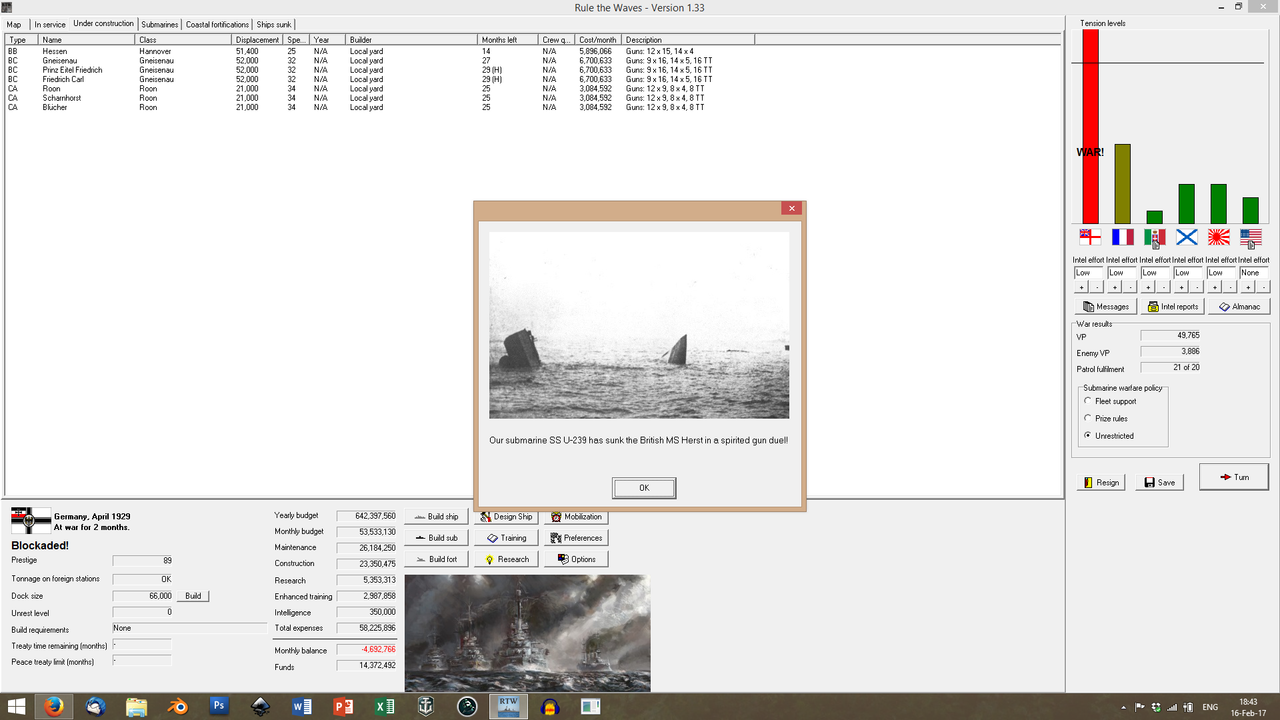
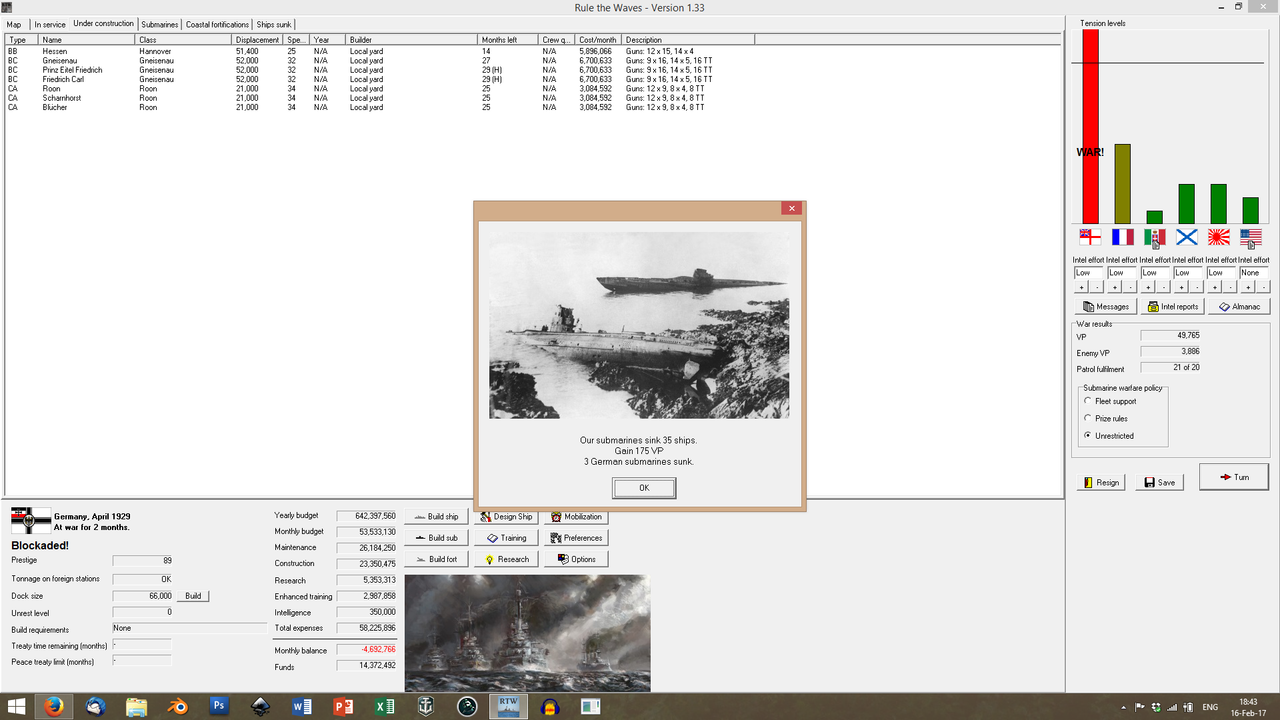
April; and the
U-Bootkommando now has the measure of the British. Unrestricted undersea warfare is ordered; the German subs now have
carte blanche to engage any legal targets without warning. Only three boats are lost this month, and all to clear mistakes by their skippers; in return, the German submariners claim a minesweeper and 35 merchantmen.
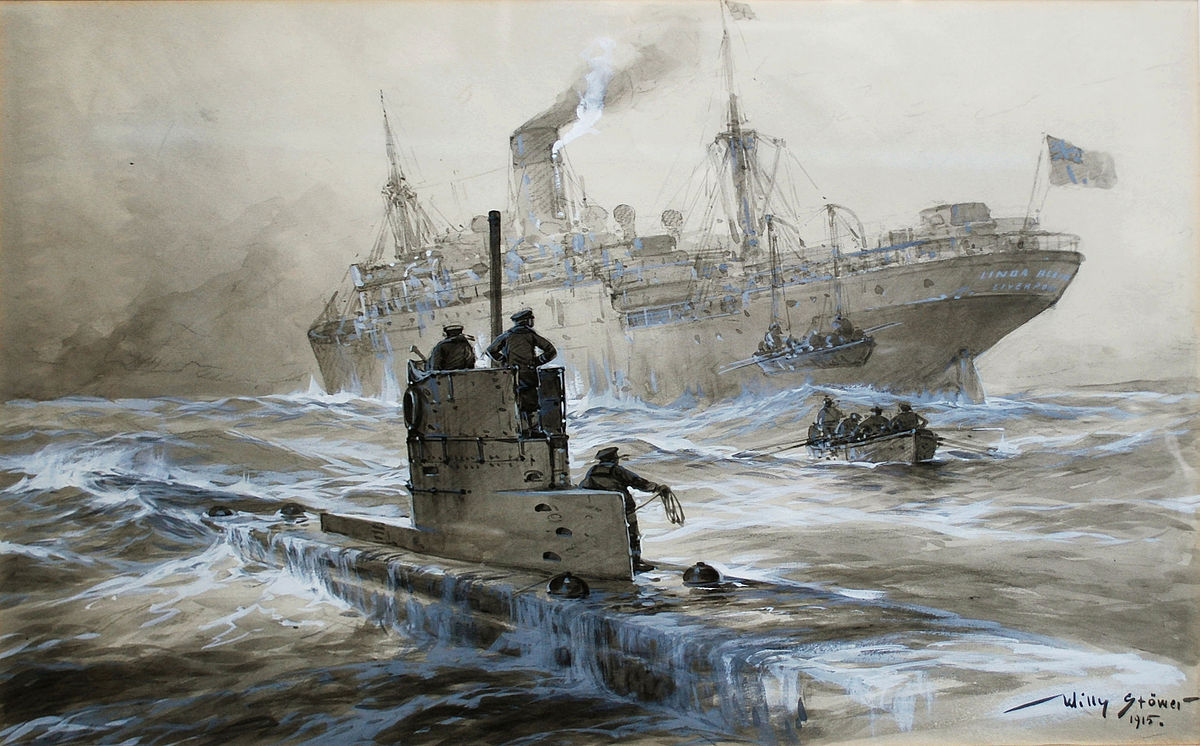 Thirty Five.
Thirty Five. More than a
quarter-million tons of shipping. The blow to the British merchant marine is staggering. Not since the Andglo-German war, a generation ago, did the German
Kaleuns feast in such a fashion.
The British response is anemic by comparison.
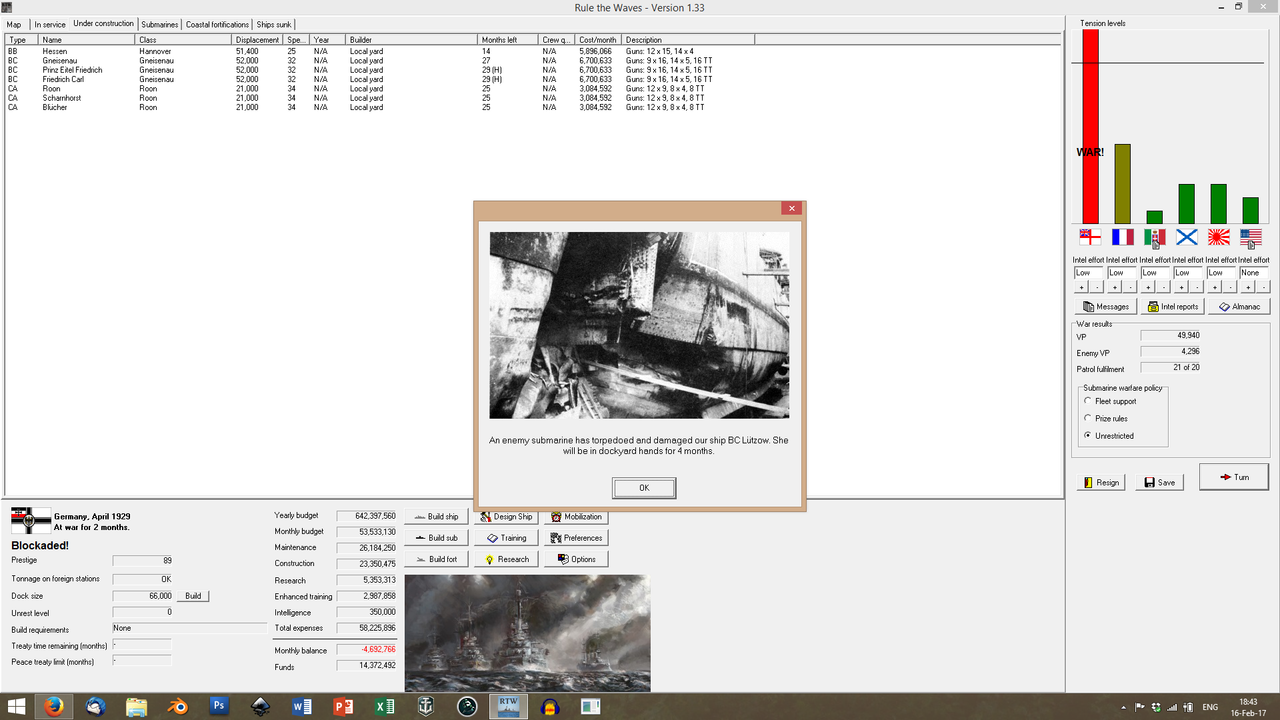
The
Lützow is torpedoed on patrol, by an opportunistic British sub. Damage to the old
Wittelsbach-class is extensive, but the
Admiralität accepts it gracefully. It was a good effort by the Brit; and the ship was an obsolete third-rate ship of the line, anyway.
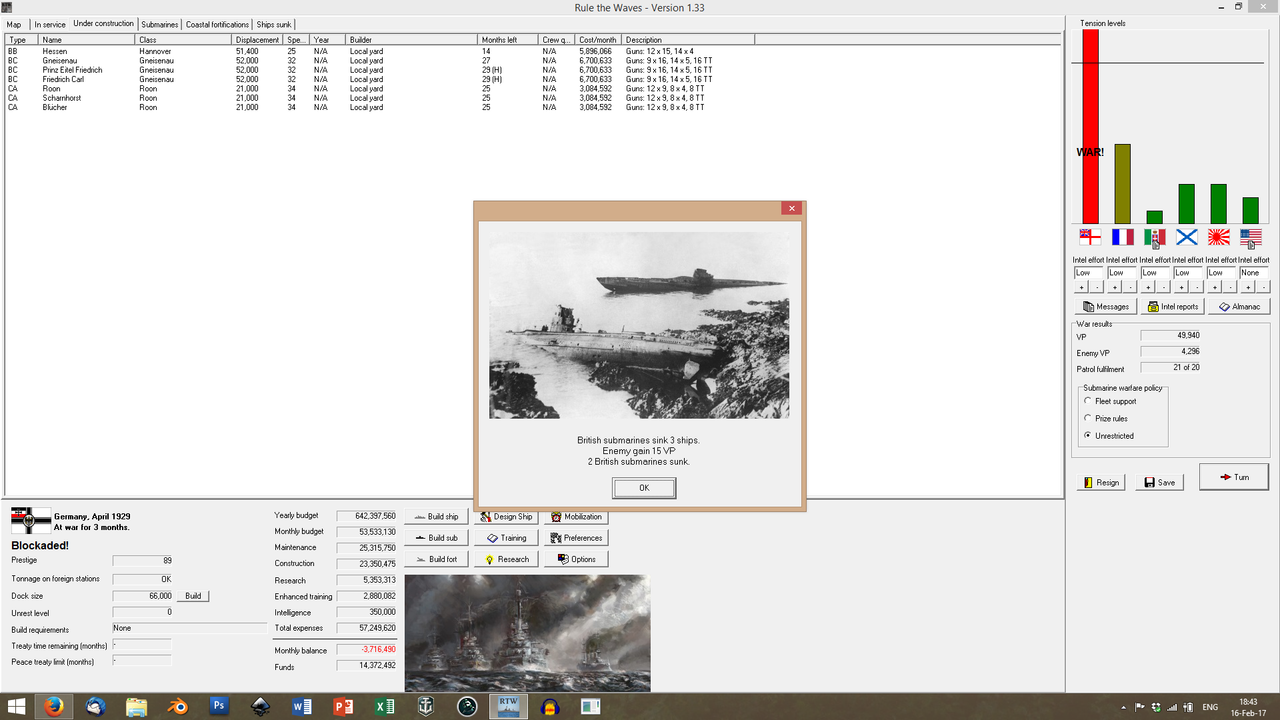
Once again, the British subs only claim three kills, and pay for them dearly.
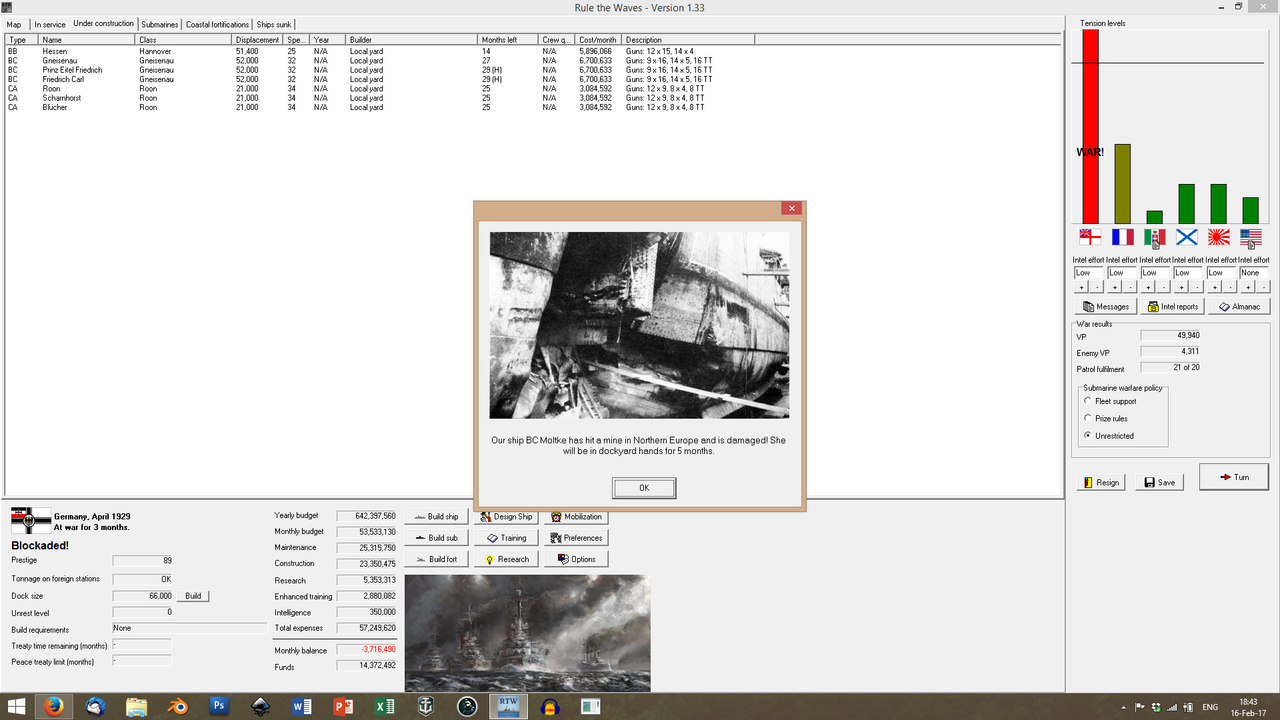
And then, this happens.
The
Admiralität considers the old
Molkte to be relatively exposed in her permanent moorings in Emden harbour. The old Valkyrie, in her retirement, is a symbol of victory; and if she should be lost to a raid, the blow to morale would be significant. It is decided to sail her to the Baltic and moor her in Danzig: her old engines are deemed to be up to the task.
Unfortunately, during her dash to the safe waters of the Baltic, on the night of the 23rd of April, she strikes a drifting mine. Her old bulkheads hold,
barely; and her skeleton crew manages to reach Danzig. Dockyard crews deem her
mauled; as a gesture of respect to her seniority, she is
immediately given space in a drydock, and repair crews desacend on her with steel and welding torches.
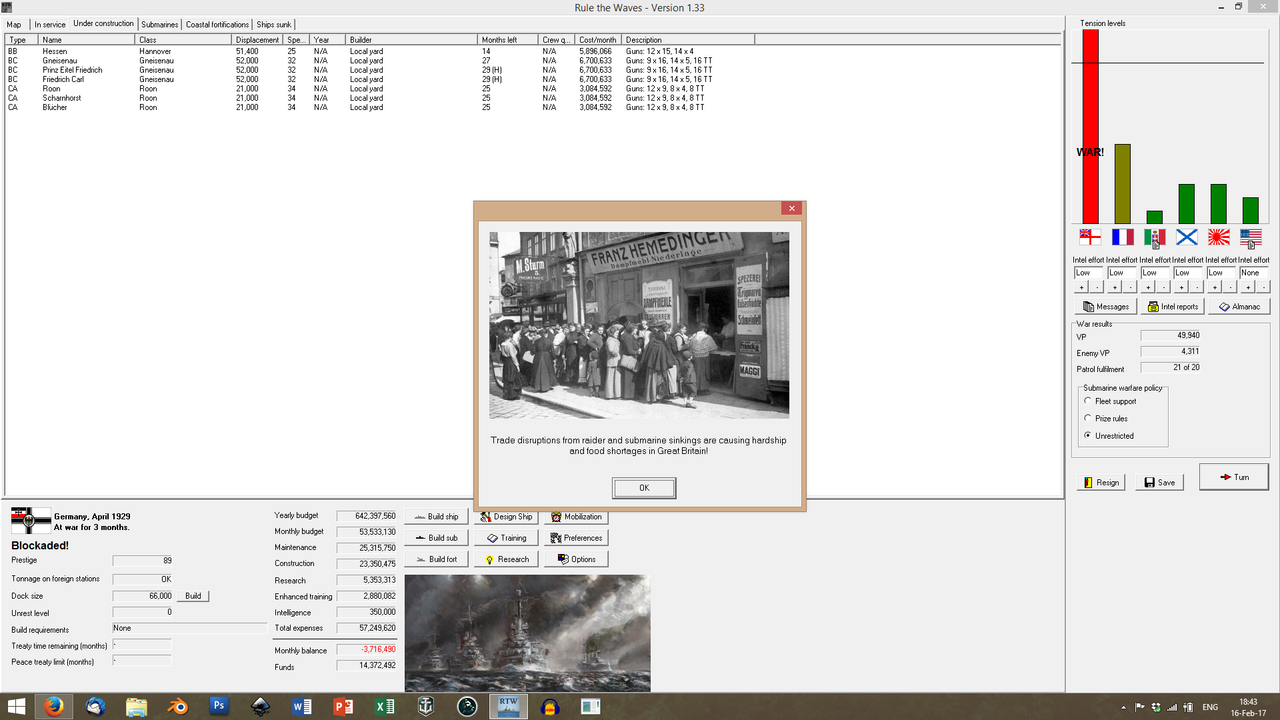
By the end of the month, the Brits are starving...
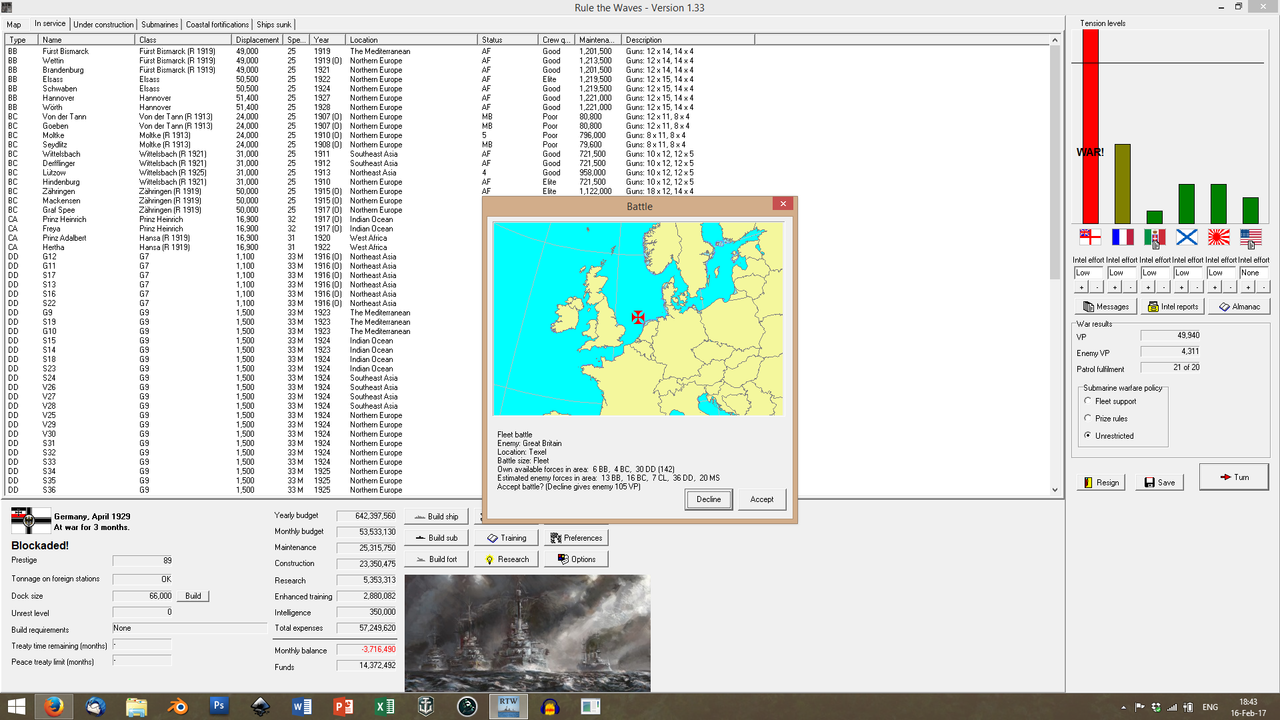
...but, perhaps more importantly, the German capitals have completed their repairs. Scheer instructs Hipper to assemble a task force and seek out an engagement with part of the Grand Fleet.
The
Jagdhund is all too happy to oblige. In the morning of the 14th of April, the two fleets are to meet again, off the Dutch island of Texel.
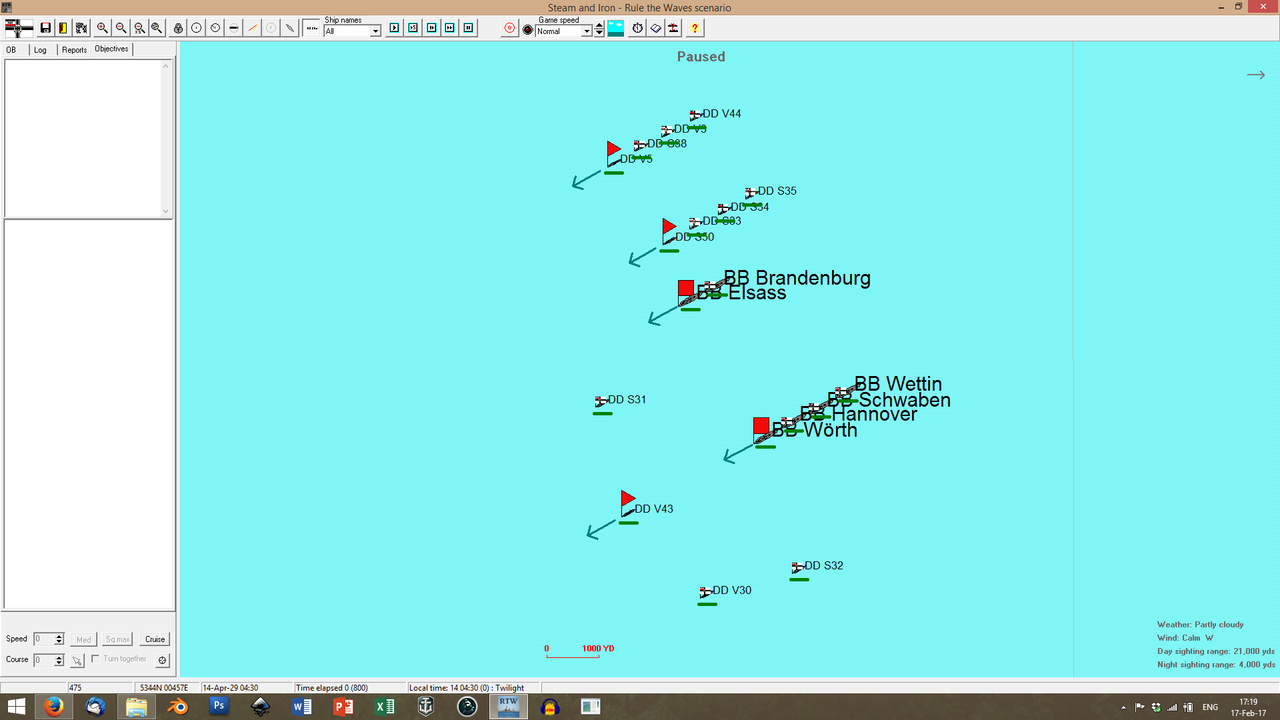
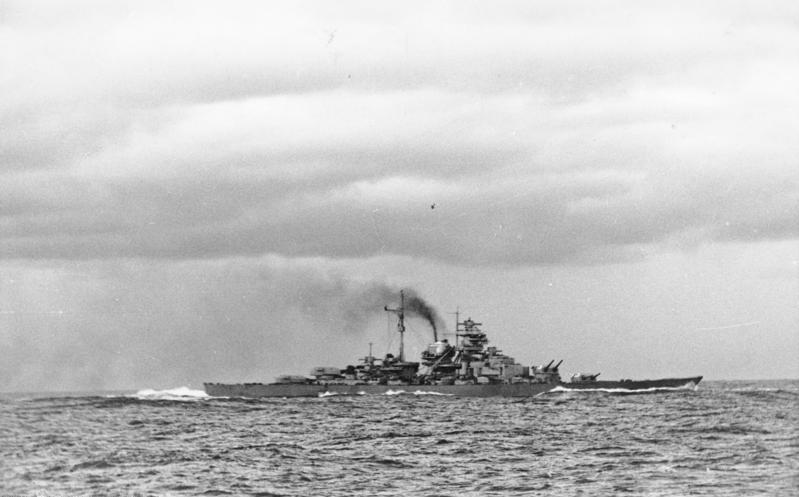
Hipper has brought his darlings back, fresh out of the yards. The German battlefleet consists of two divisions: the
Wörth, Hannover, Schwaben and
Wettin in one, and the
Elsass and
Brandenburg in the other. They are escorted by twelve (!) heavy
Zerstörer, in what is probably (and ironically) the heaviest light ship screen ever assigned to a capital ship formation.
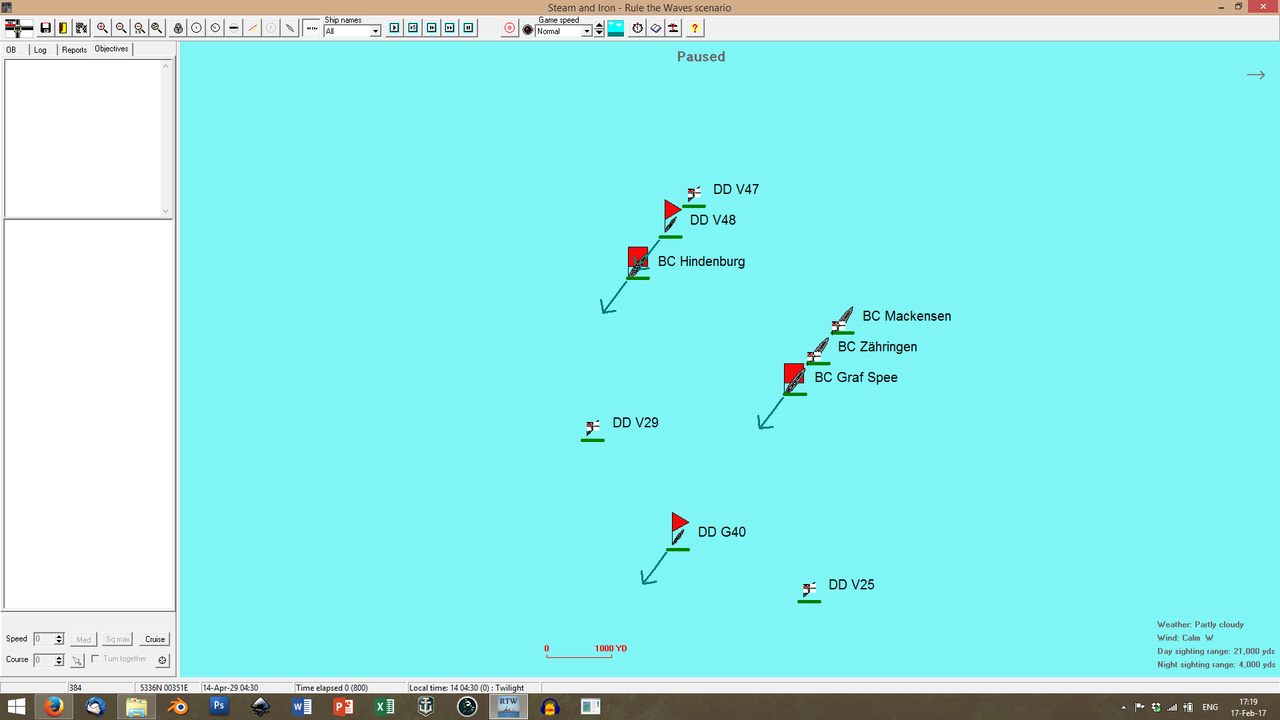
Michaelis is scouting ahead, with a heavy
Schlachtkreuzer force. The
Zähringen triplets form one division; the older
Hindenburg guards their flank, more as a support vessel than a battle-line combatant. Five
V9s are screening.
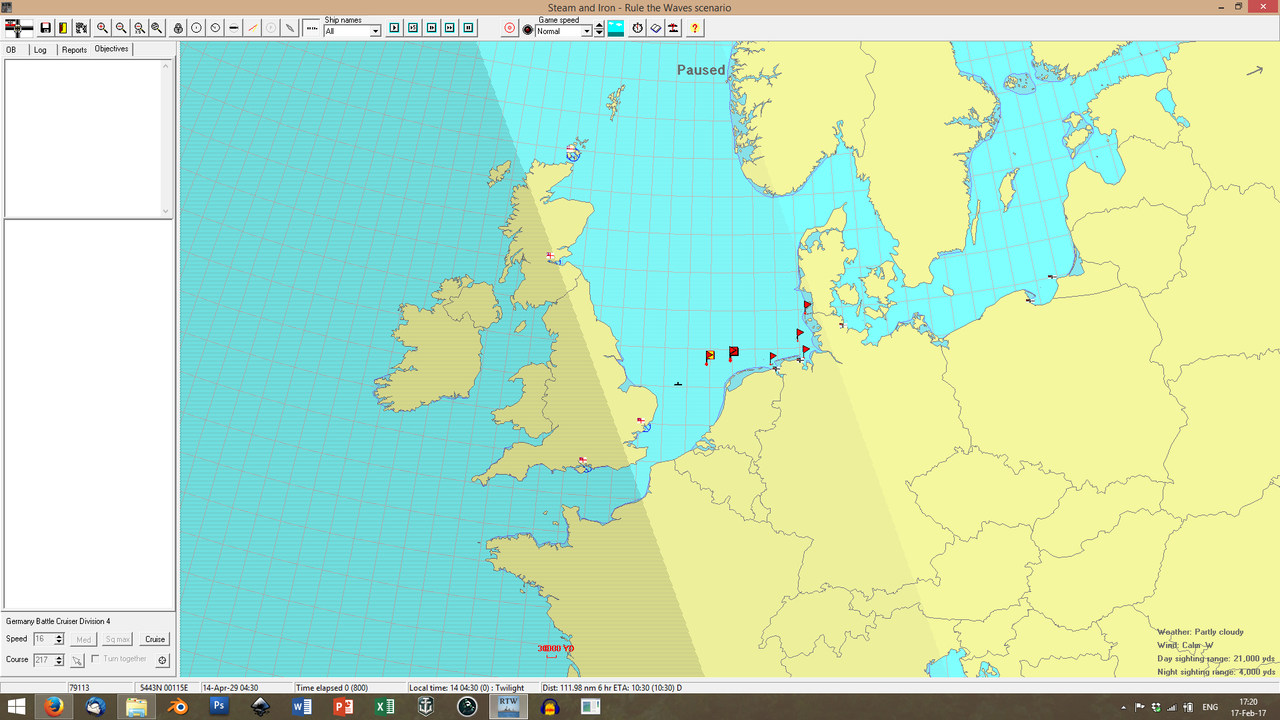
The German battlefleet has orders to either poke the Channel defenses or, if challenged, to engage and destroy any element of the British Grand Fleet that comes out to meet them. Submarines are patrolling the British shoreline, keeping an eye for British forces. However, they will fail in their task. Somehow, masked by the early dawning light and homing in on the lax radio discipline of the
Zähringens, the British task force led by Vice-Admiral Orwell manages to creep up to the German fleet unannounced.
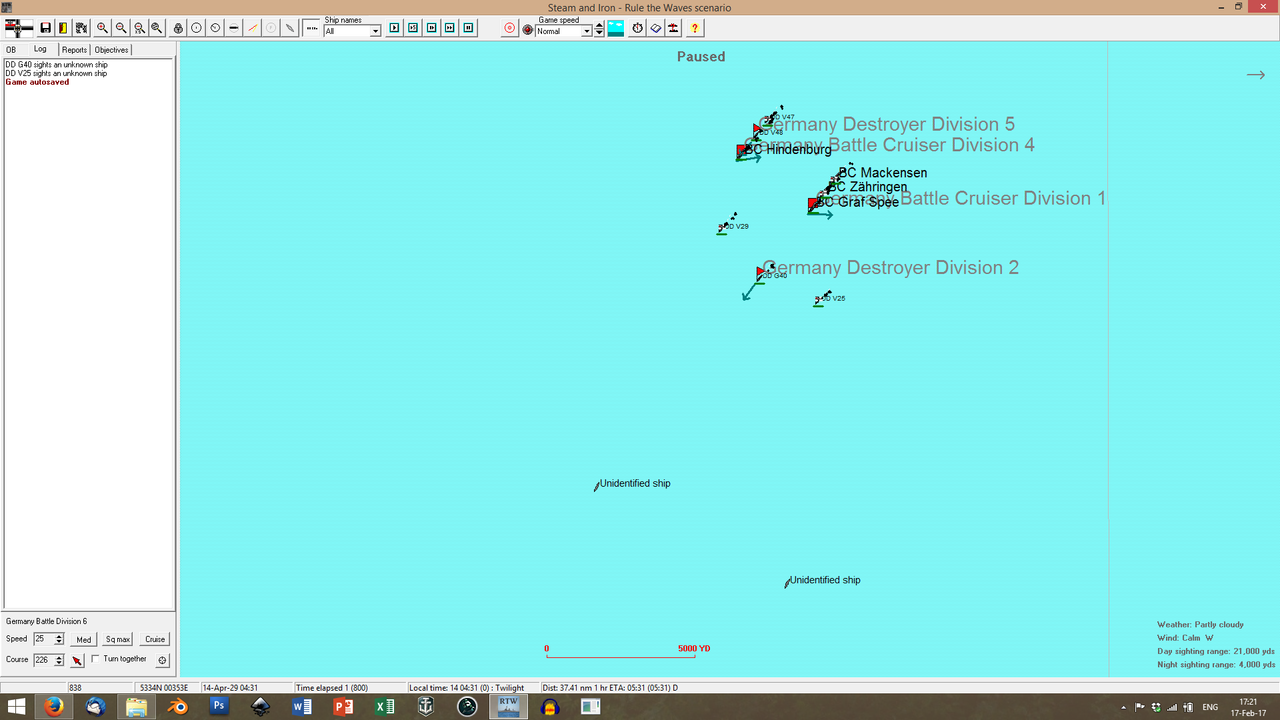
At 04:31 in the morning, the
Zerstörer screen of the
Zähringens picks up the smoke of the inbound British ships, less than 10k yards away from their wards. Michaelis
immediately orders 'rudder hard to port', and brings his ships around. He has no idea what he's facing and, until he does, he wants to keep the enemy at mid- to long-range.
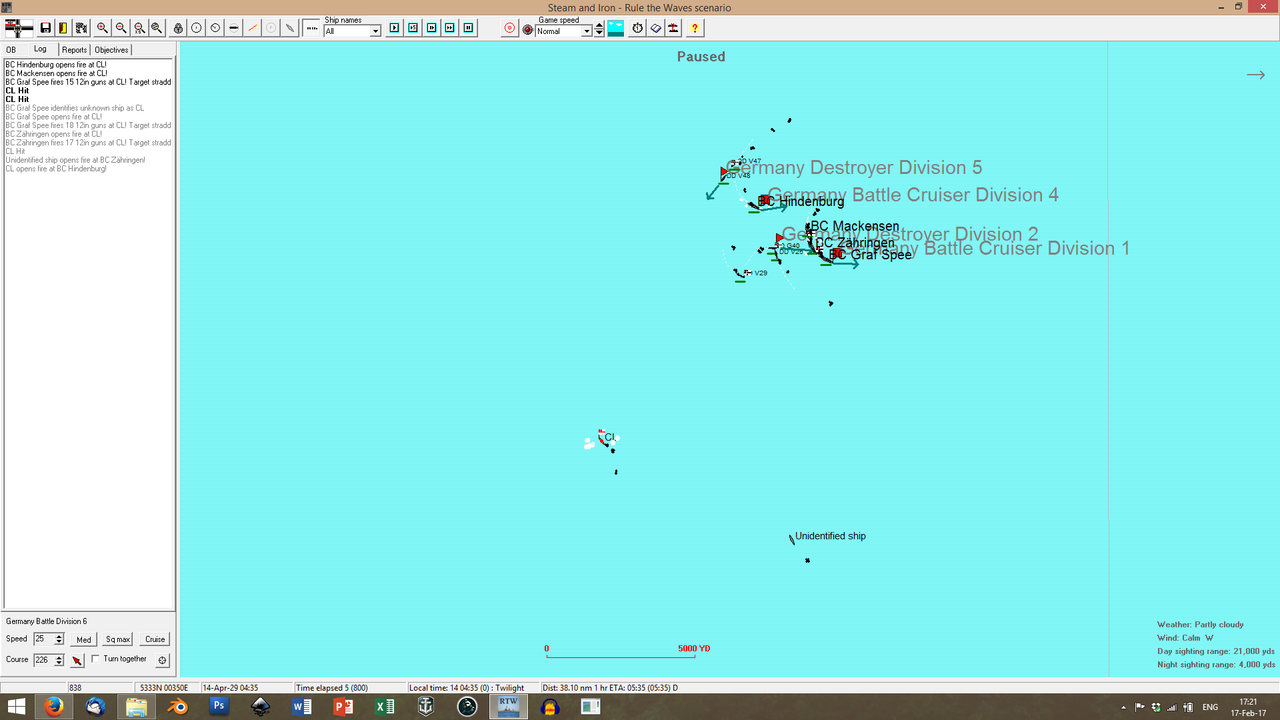
His flagship, the
Graf Spee opens fire first, and scores two hits on what his lookouts tentatively identify as a light cruiser.
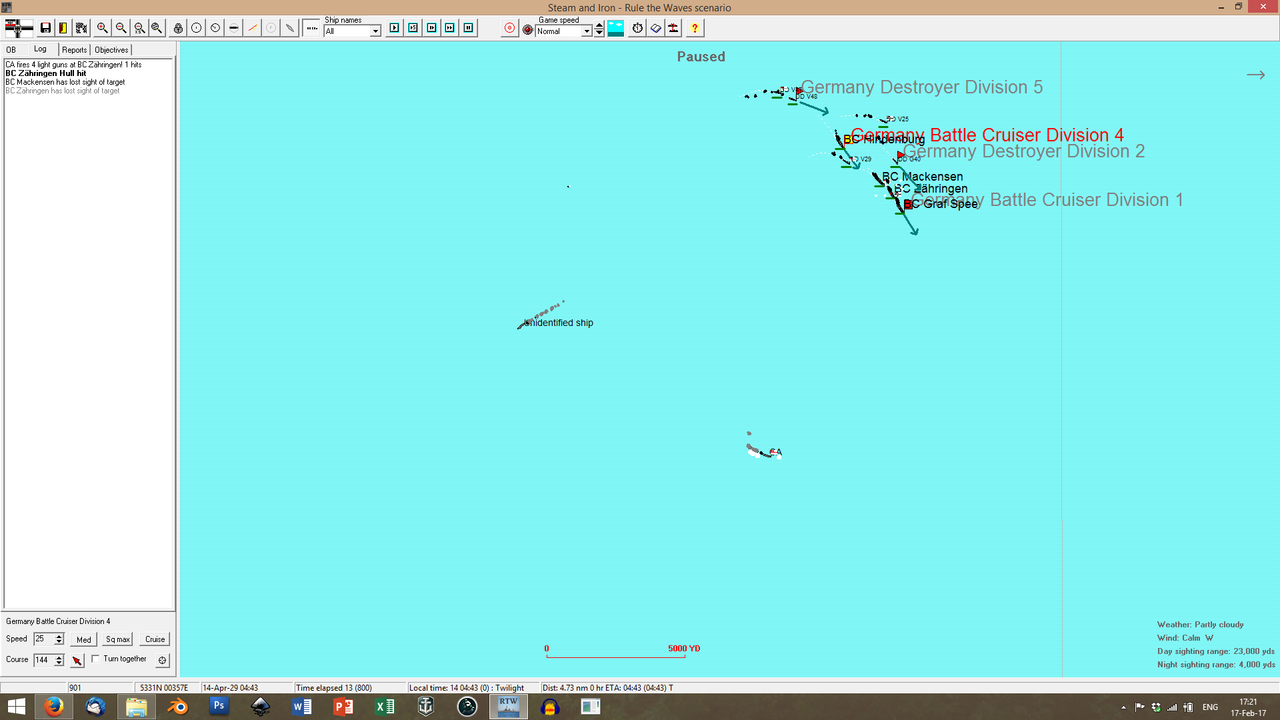
The enemy ship immediately reverses course and disappears in the twilight gloom; another target opens fire at the
Zähringen from further to the south. A shell hits the
Schlachtkreuzer but bounces off her belt.
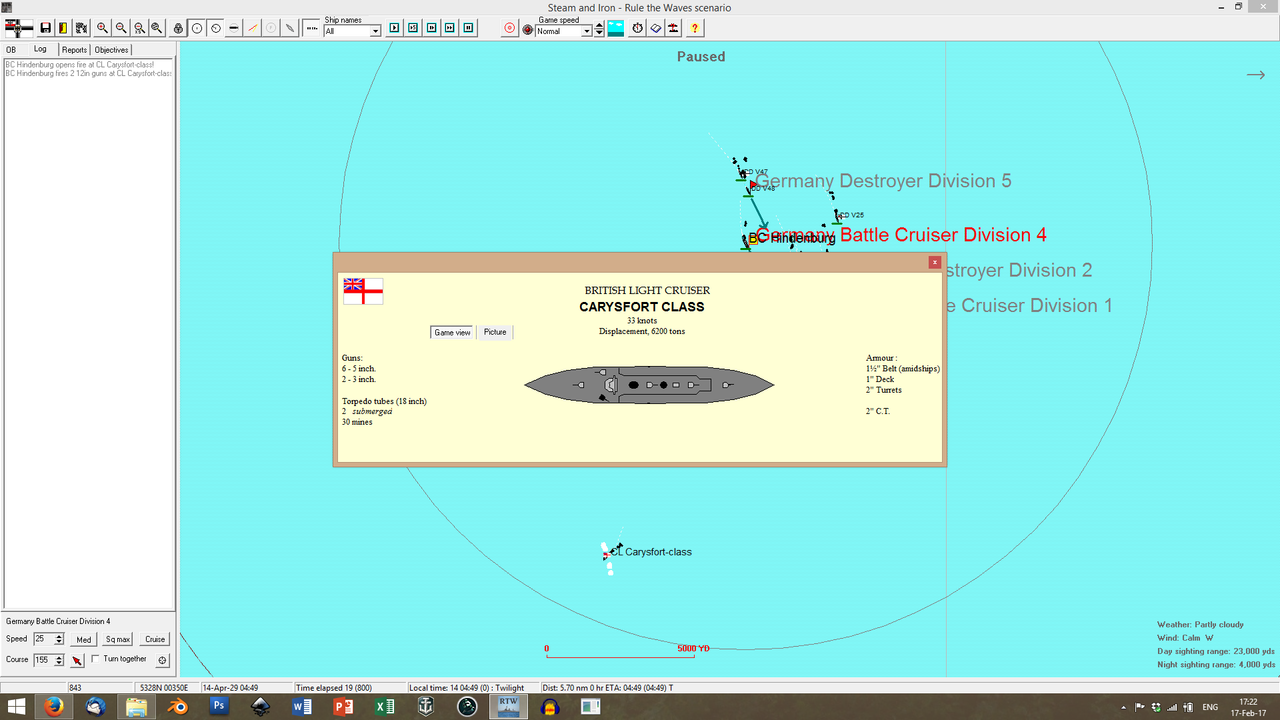
It takes the lookouts some time to identify her, but they eventually succeed. She's a
Carysfort-class: a light destroyer-hunter and fleet scout. She has
no business operating alone. Michaelis contacts Hipper: SIGHTED ENEMY SCOUTING ELEMENTS. ENGAGING AT LONG RANGE. COURSE 170.
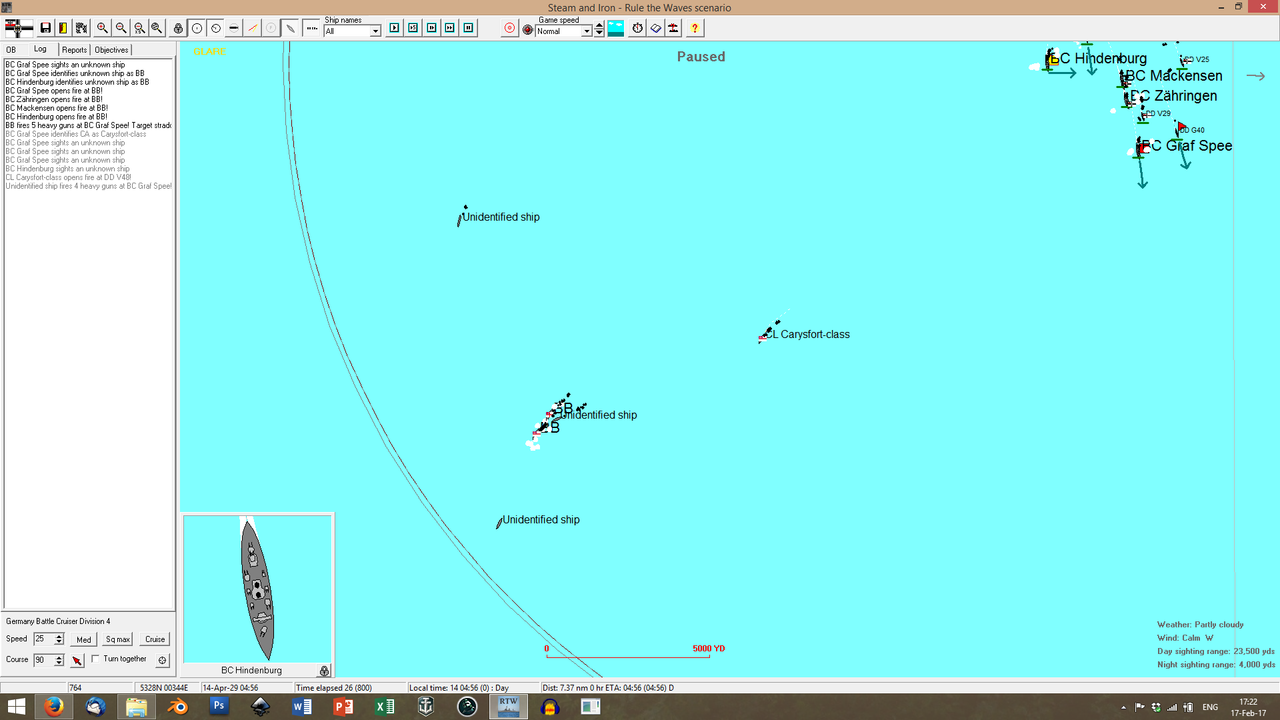
His estimate proves correct when the dark shapes of British capitals emerge from the western horizon. They are already within range of the old
Zähringen 12-inchers - which means that Michaelis' force is already within
their range. The German ships do not hesitate; they
immediately switch fire to the enemy behemoths.
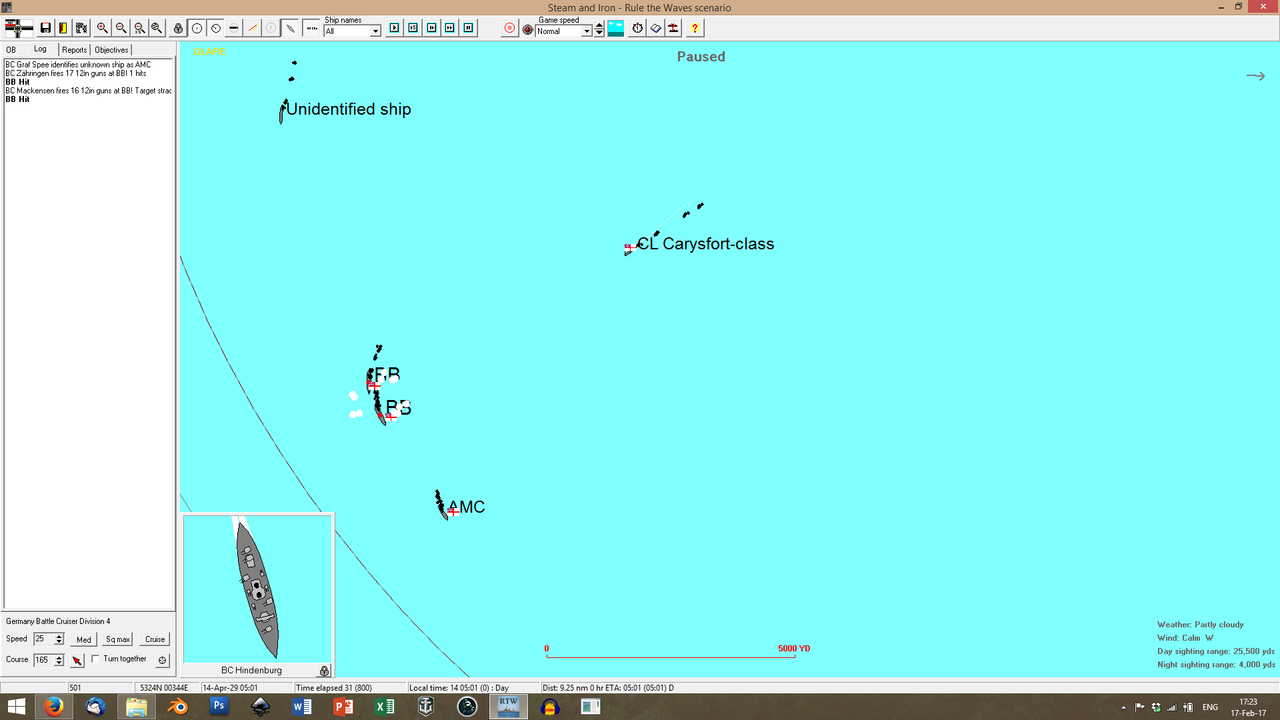
And score their first hits! At this range, the 12-inch shells are plunging onto the British turret tops and decks; the
Zähringen and the
Mackensen straddle their targets with their first salvos to good effect.
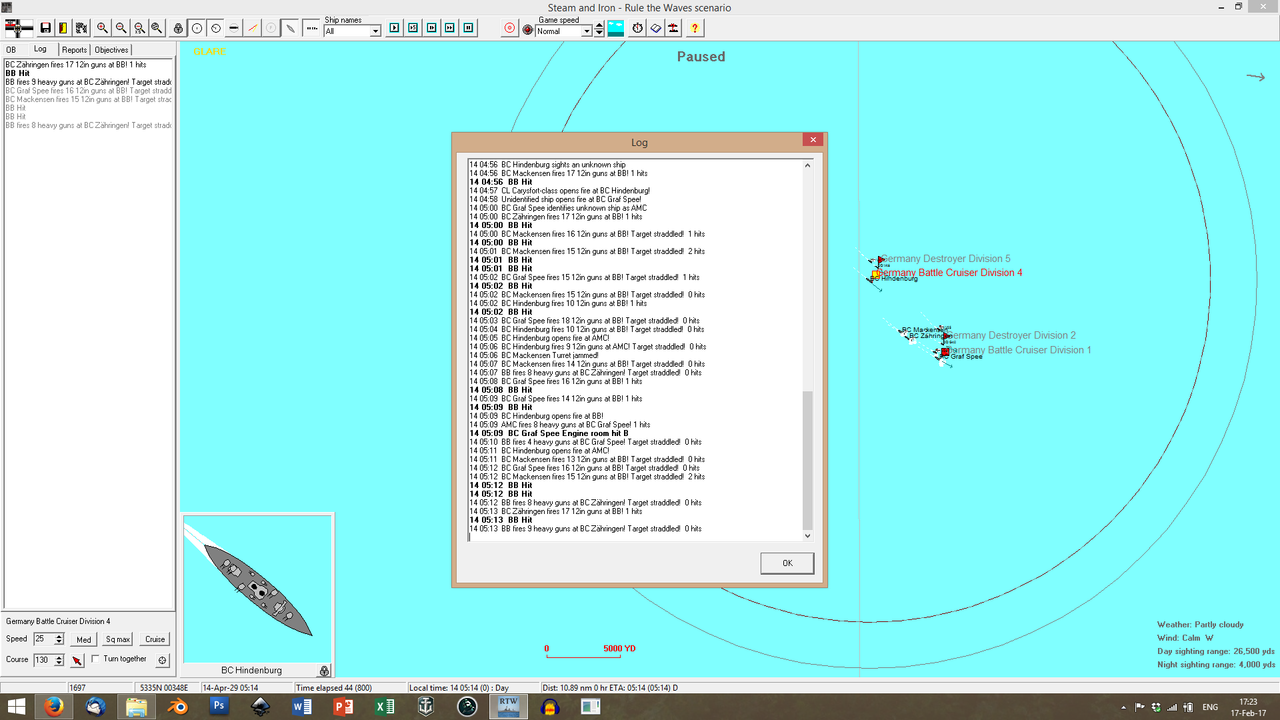
Return fire is sporadic and inaccurate. Once more, the German insistance on well-trained, professional gunnery crews proves superior to the British reservist forces. Within the space of 2 minutes, Michaelis'
Schlachtkreuzer score
twelve 12-inch hits on their opponents; the British only score one hit, that ricochets off the
Graf's main belt.
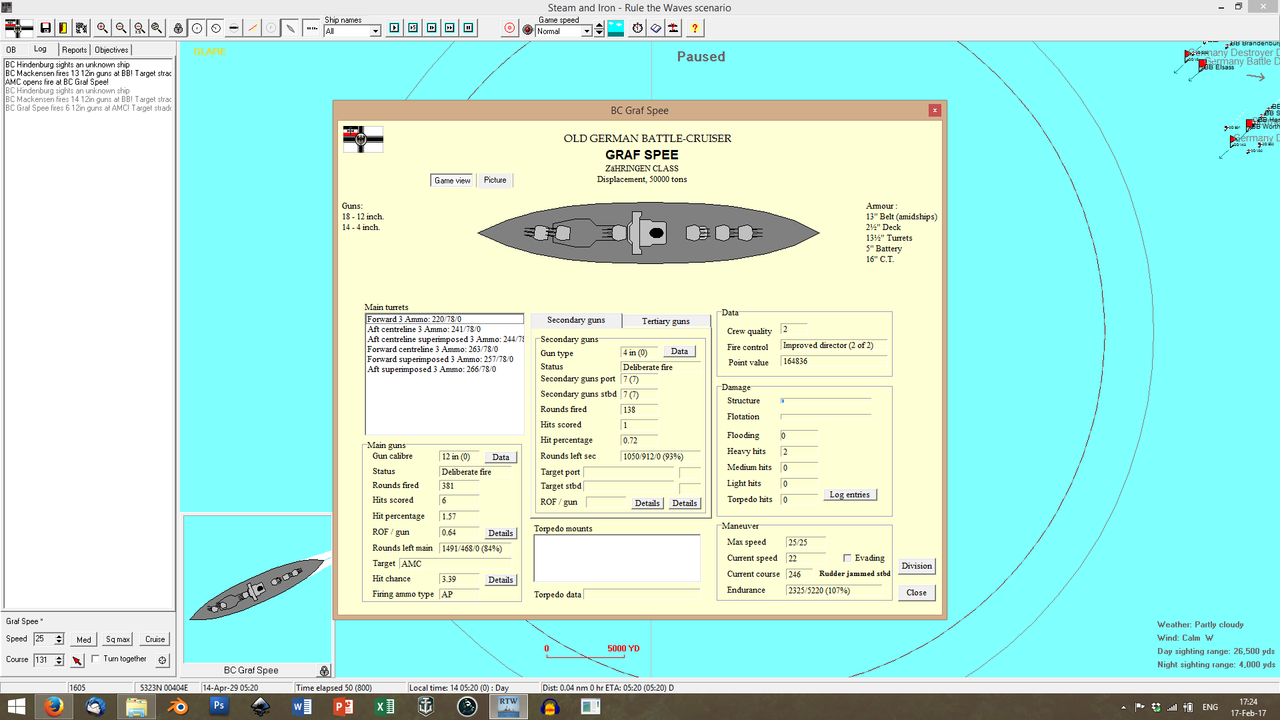
And then, disaster almost strikes for Michaelis. A second heavy British shell misses the
Graf by mere meters and detonates underwater, just aft of her. The blast locks the flagship's rudder, on a tight turn to starboard, and the
Graf leaves the formation, circling helplessly. The maneuver is sufficient to throw off British aim, but for how long?
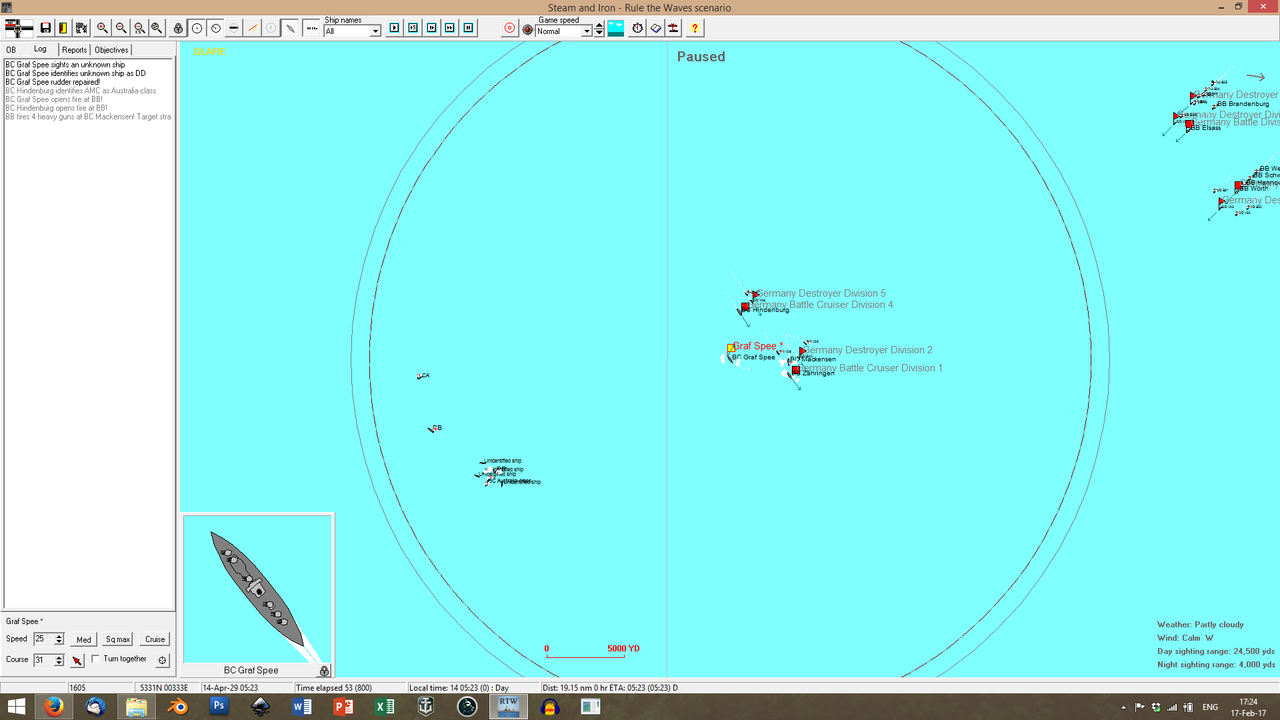
Three minutes. That's how long it takes for the
Graf's veteran damcon crews to repair the rudder. It's been a harrowing three minutes, during which the
Graf has found herself the sole focus of the enemy force; but these three minutes have also allowed her to identify her foes.
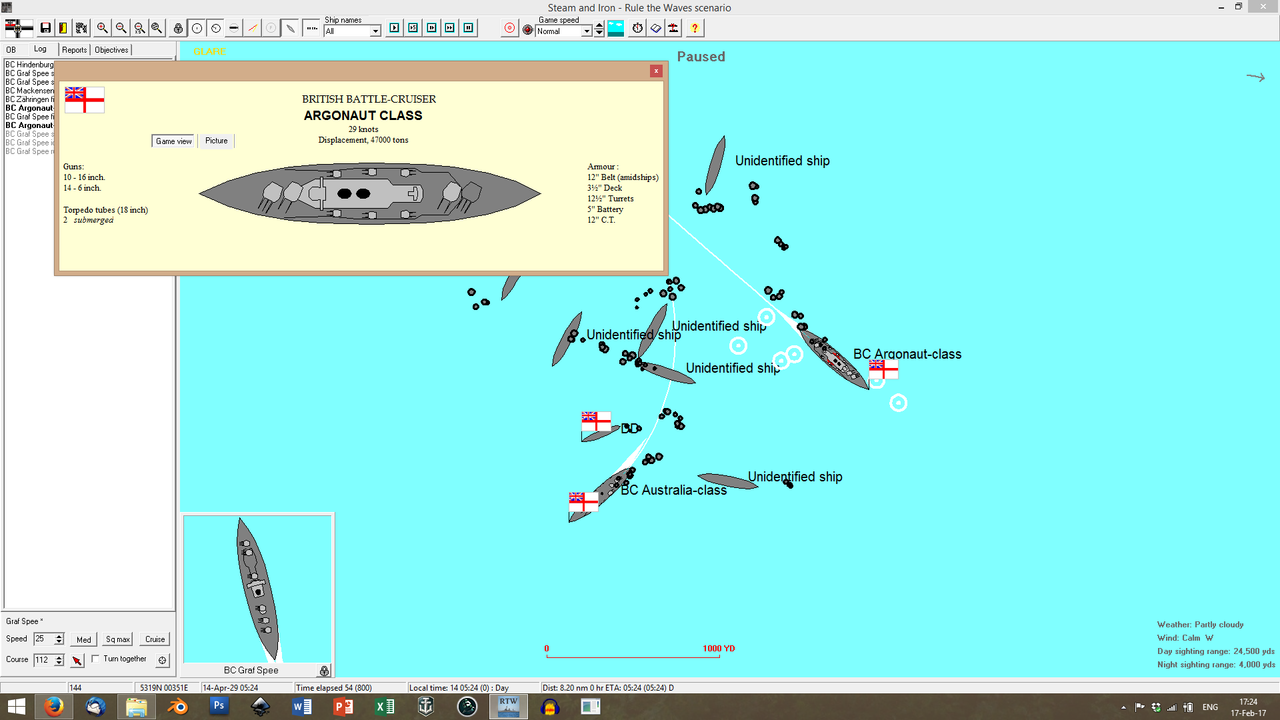
It's a battlecruiser scouting force, all right. From within the cluster of wildly maneuvering enemy ships, the
Graf's lookout make out the now-familiar cross-deck-firing silhouette of an
Australia-class battlecruiser; and, just in front of her, they also identify an
Argonaut-class ship.
The
Argonauts are budget versions of the
Spartiates. Their deck is slightly thinner, but their batteries are equally powerful, and their speed is unmatched - no German capital could hope to catch up to them.
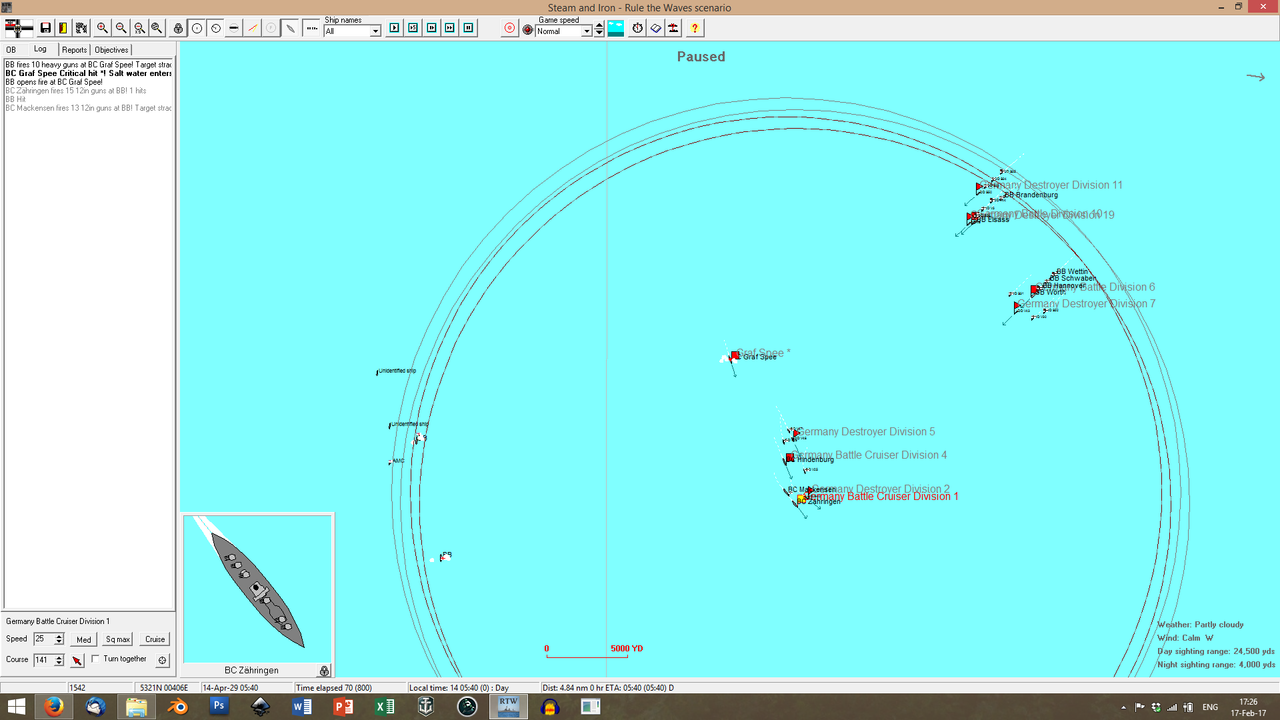
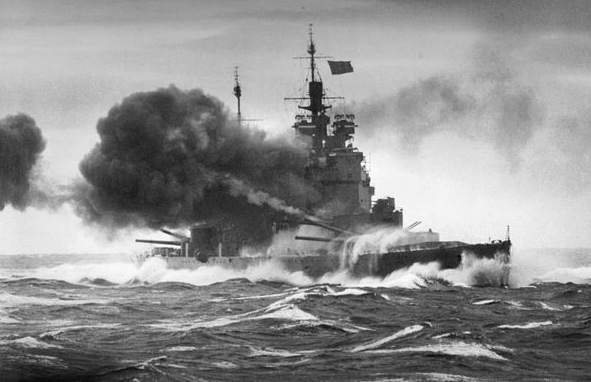
And
this captain (Commodore Sir Leslie Connely, it was later determined) knows how to use his ship. Instead of closing in, to brave the
Zähringen shotguns at point-blank range, he dances in and out of maximum spotting distance, making the most out of his heavy shells and utilising his speed advantage to the maximum.
Worst of all, he knows how to shoot. One of his 16-inch shells hits the
Graf amidships, penetrating her thin deck and nailing the boiler feed tanks. The German flagship's deck and belt are compromised; and salt water floods the engineering spaces. It's a critical hit, that shaves off nearly half the speed of the German
Schlachtkreuzer. Her insides
burn with flaming oil and steam. She breaks away and steams east, barely making fifteen knots. Command passes to
Kapitän zur See Franz Horst, of the
Mackensen.
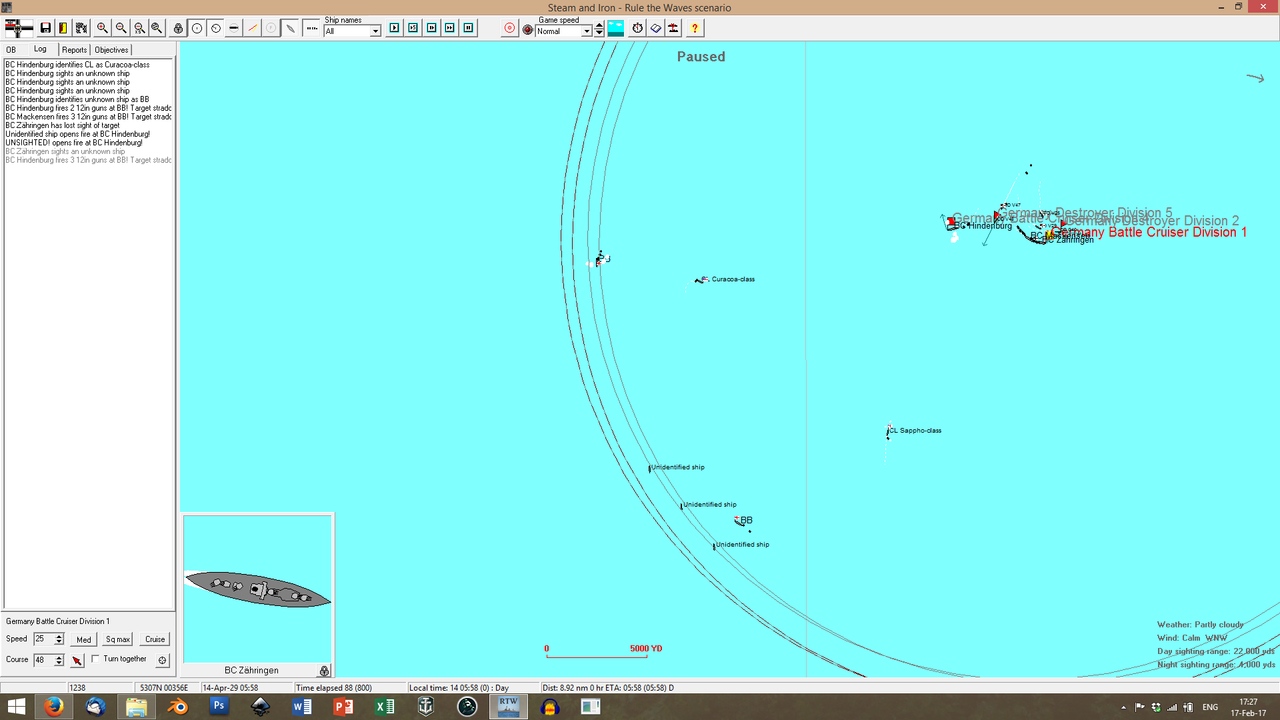
With the
Graf falling behind, Horst decides to do a scouting push. He will brave the British fire once again, trusting in his ships' durability to get them through; he will identify targets and determine the enemy's force composition; and then he will fall back, behind Hipper's
Schlachtschiffe, that are already charging in.
He executes his plan.
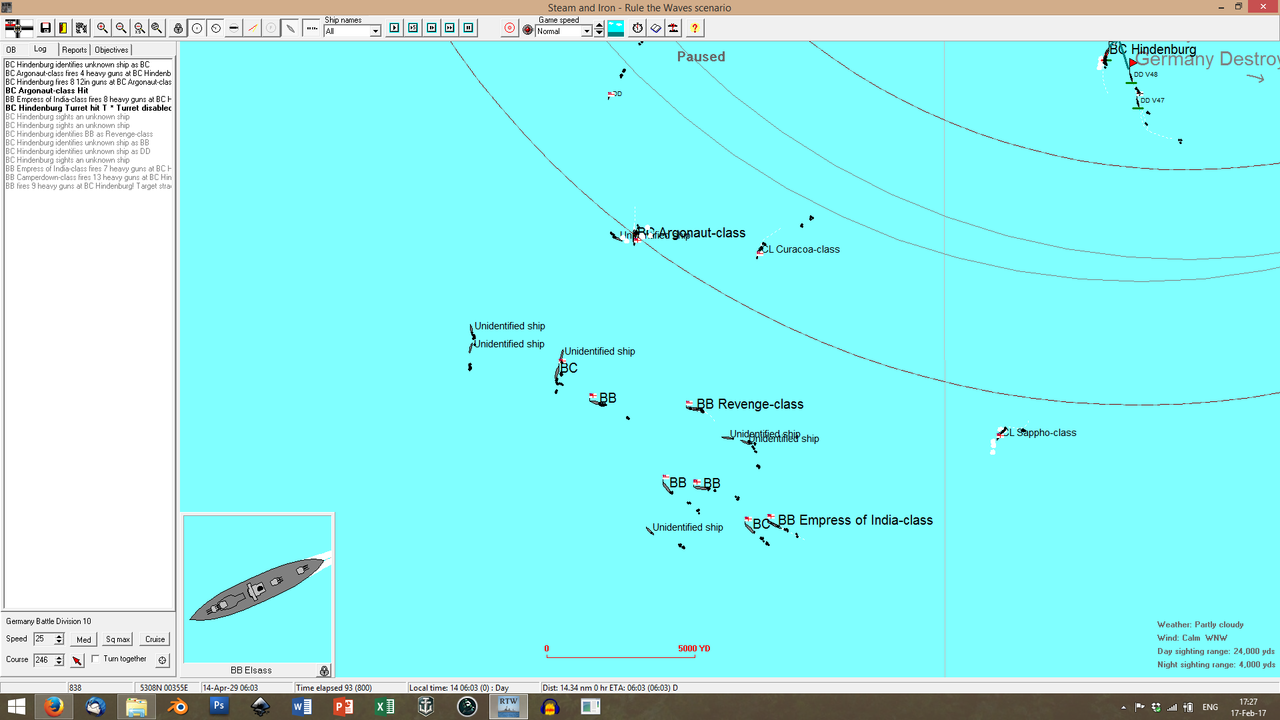
He does not emerge unscathed. His ships are focused by British gunnery; and
Hindenburg pays for it with one of her turrets. But he manages to idenfity at least
eight enemy capitals, both dreadnoughts and battlecruisers. A signal is sent to Hipper: ENEMY MAIN FORCE DETECTED. CURRENTLY FORMING BATTLE-LINE TO MY SOUTH-WEST. SEVEN+ CAPITALS. ADVISE.
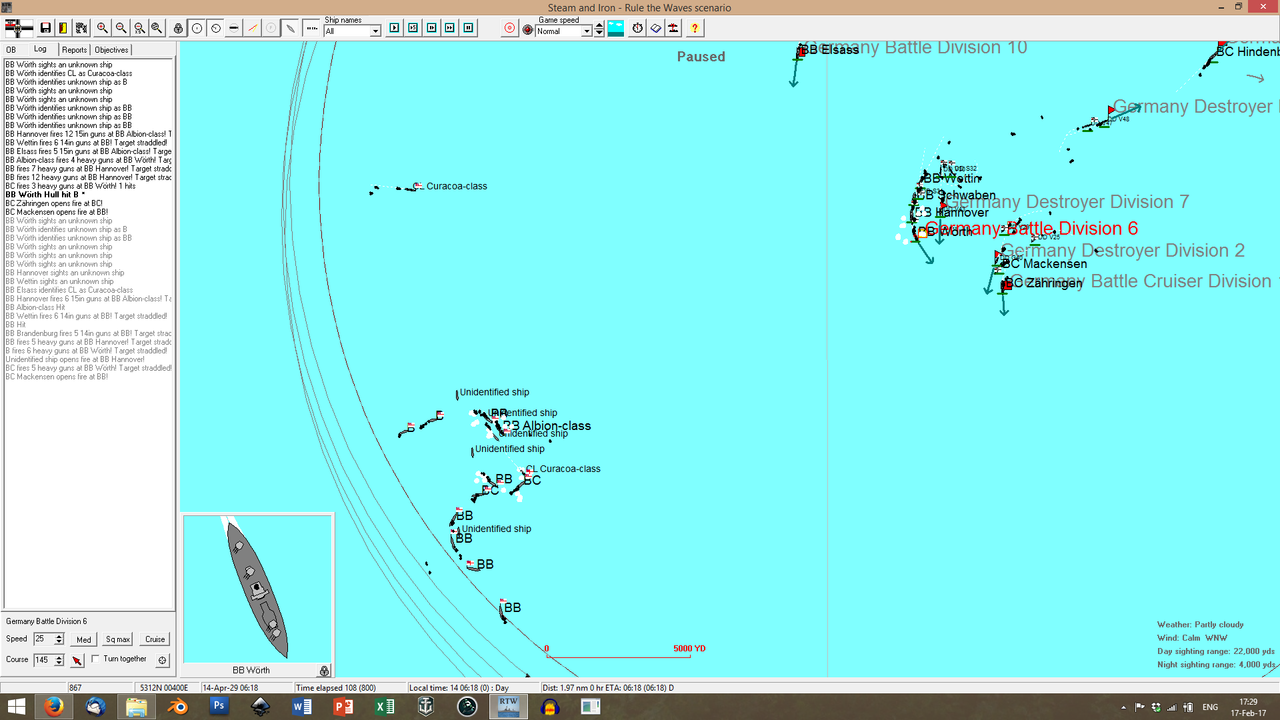
Hipper's response is immediate. As the main
Schlachtschiffdivision passes by Horst, closing with the enemy, he signals: FORM UP ON MY WAKE. ENGAGE TARGETS OF OPPORTUNITY.
Then, a message to his own division: SCHLACHTSCHIFFE RAN AN DEN FEIND.
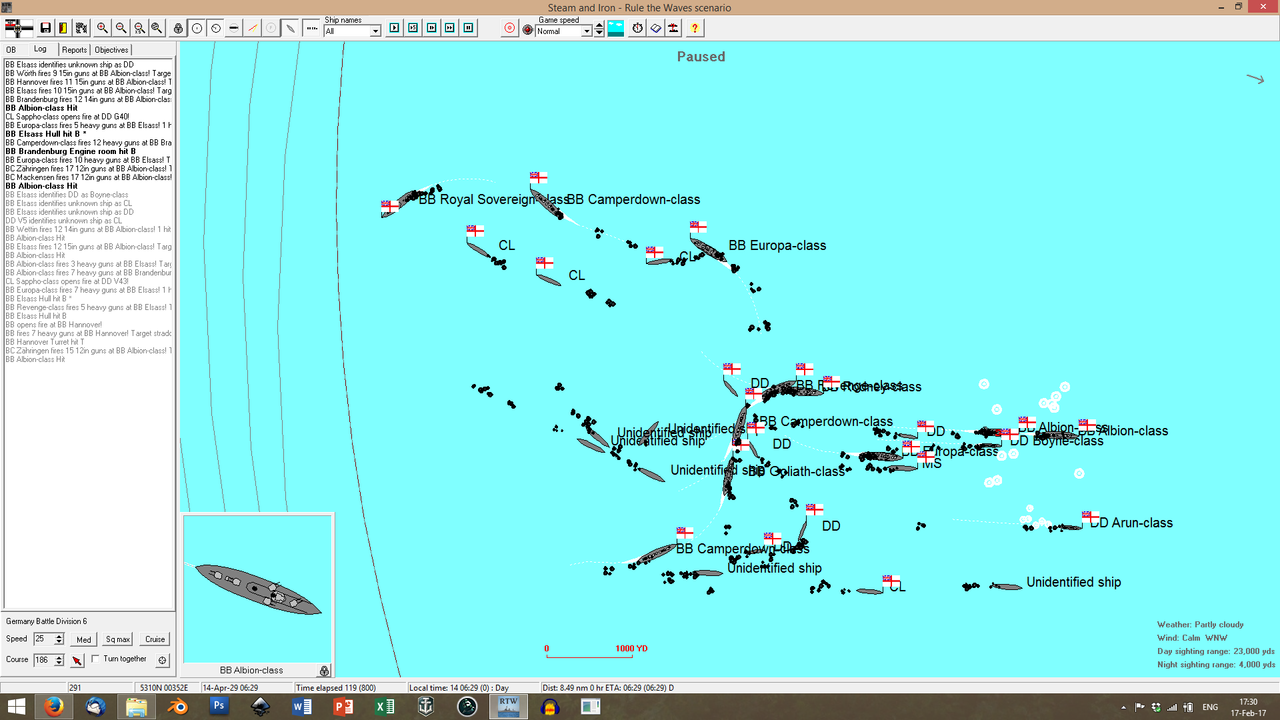
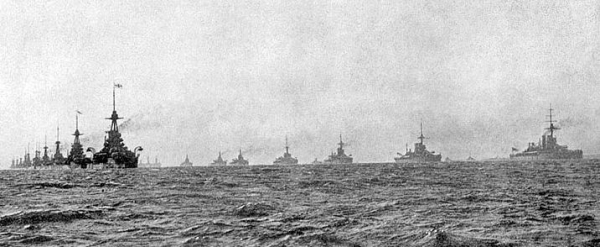
And what a
Feind it is.
The Brits have brought everything but the kitchen sink. German lookouts on the
Wörth identify: a
Royal Sovereign-class, two
Europas, three (!)
Camperdowns, a
Rodney, a
Revenge, two
Albions and a
Goliath. The weight of fire the Brits have brought to bear is beyond everything they have amassed in previous clashes.
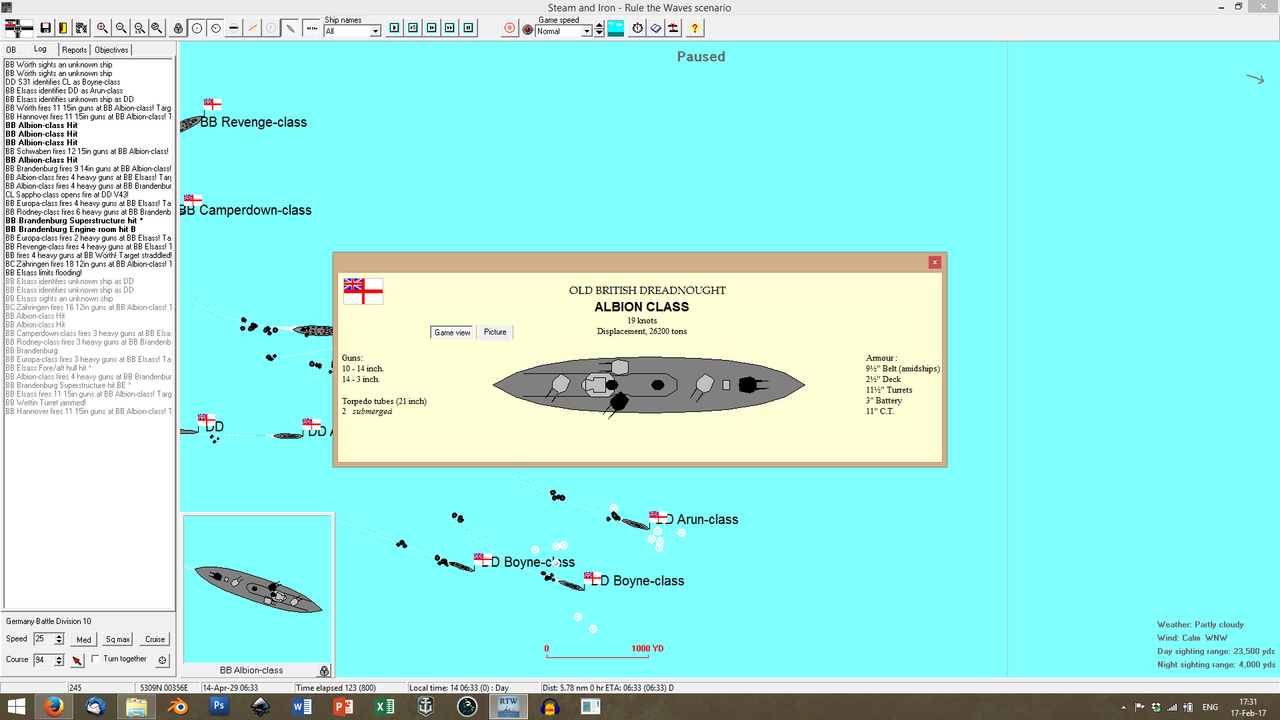
One of the
Albions has overextended, pushing
just far ahead of the British formation that she has made herself a target. She takes concentrated fire, losing two of her turrets...
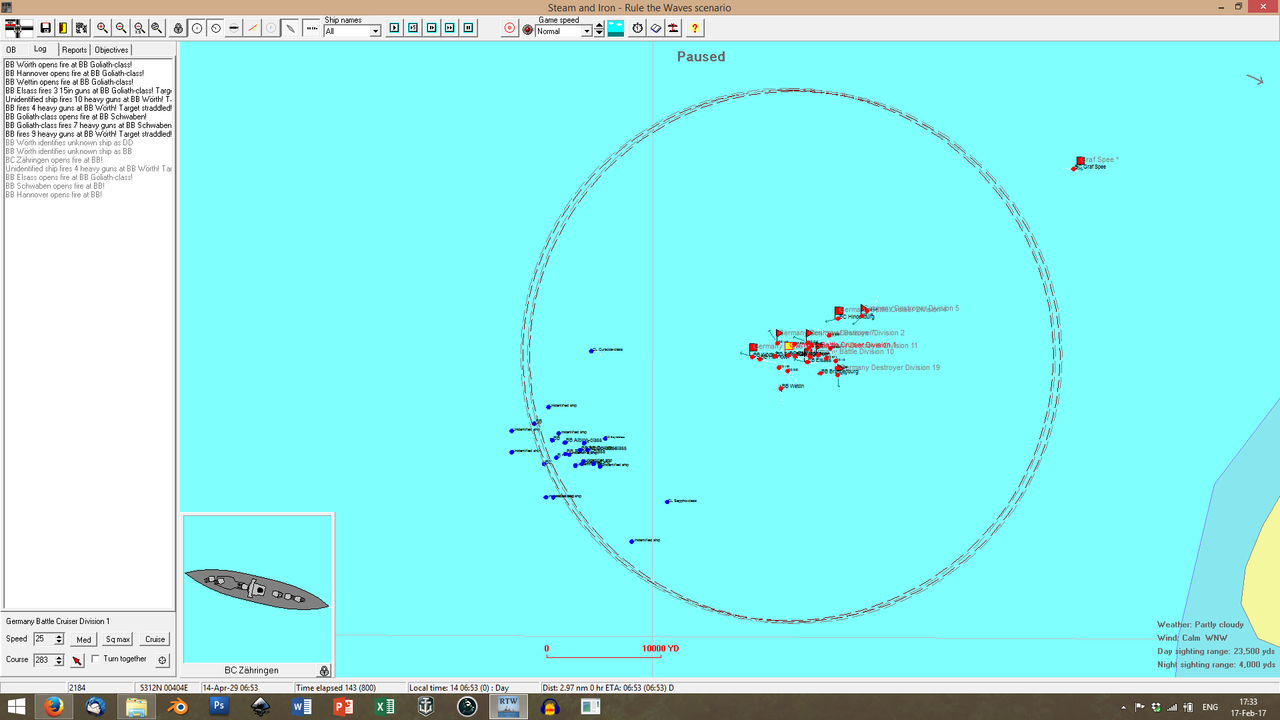
...but then the two fleet formations engage in a mid-range brawl and all semblance of order falls apart.
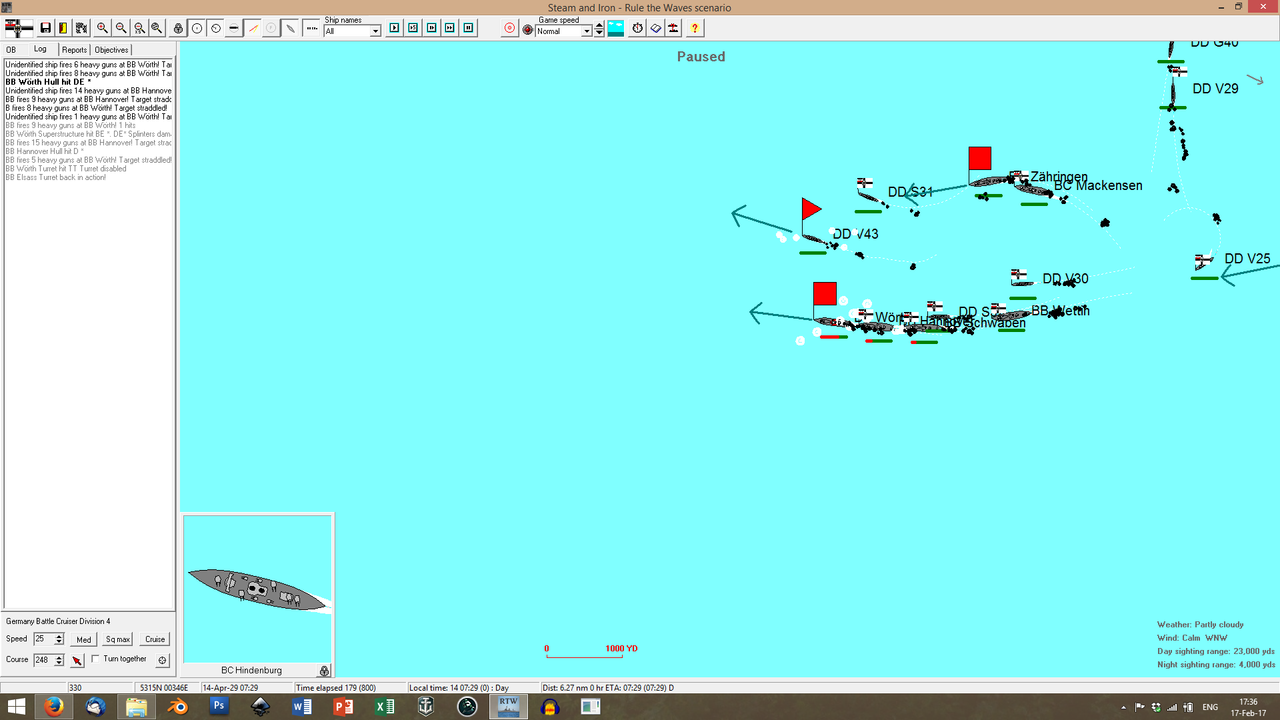
The German
Schlachtschiff division gets mauled, in short order. The
Hannover and
Schwaben are pummelled by several shells over a period of ten minutes; but it is
Wörth that takes the brunt of the fire. The volume of incoming fire from the Brits jams turrets, penetrates fore compartments and smashes her superstructure to bits.
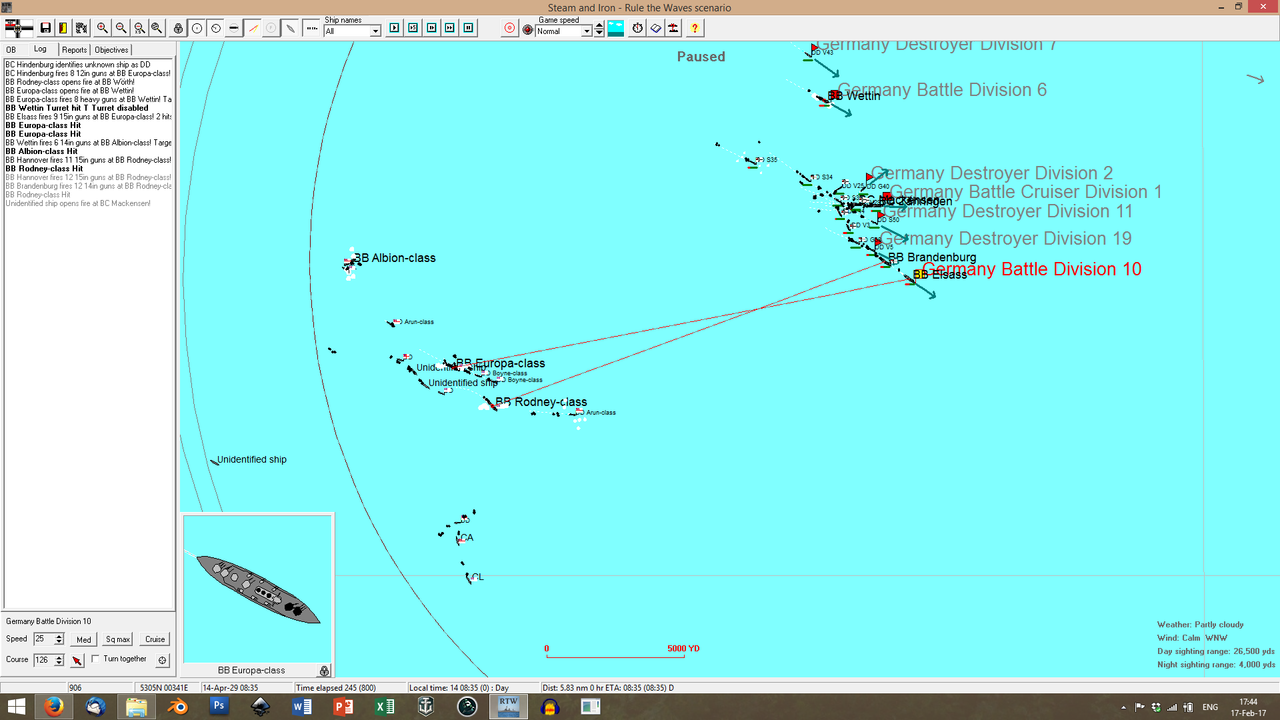
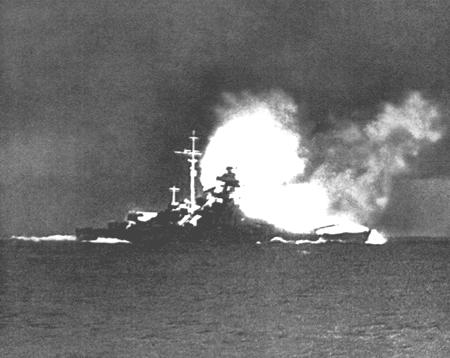
But the Germans strike back, with accurate fire. Gouts of fire explode from the British line, wherever German shells penetrate turrets and secondary batteries. The German gunners particularly focus on the
Europas, knocking out several turrets.
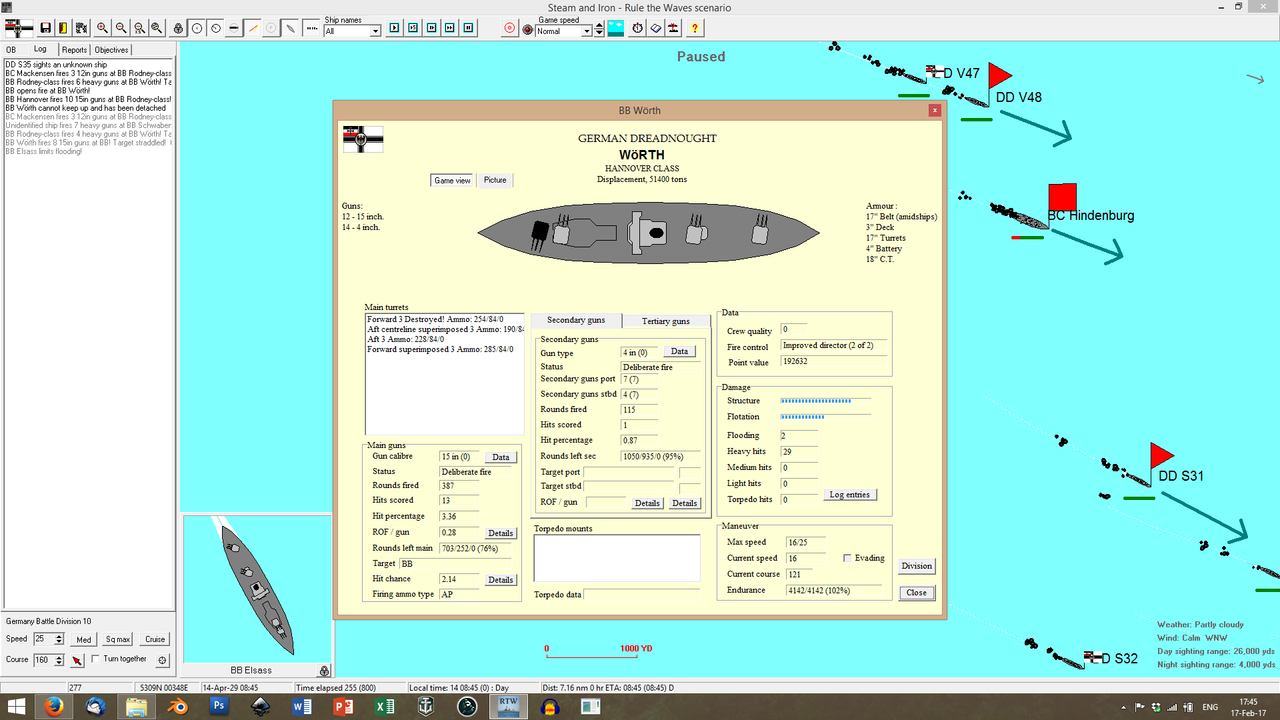
At this point, the Germans
have to run. The British have proven to be uncharacteristically capable opponents, having battered the
Wörth's superstructure to pieces. Hipper is not eager to pursue a battle against such overwhelming numbers and potentially lose one of his modern capitals; he pulls out, seeking refuge in German home waters.
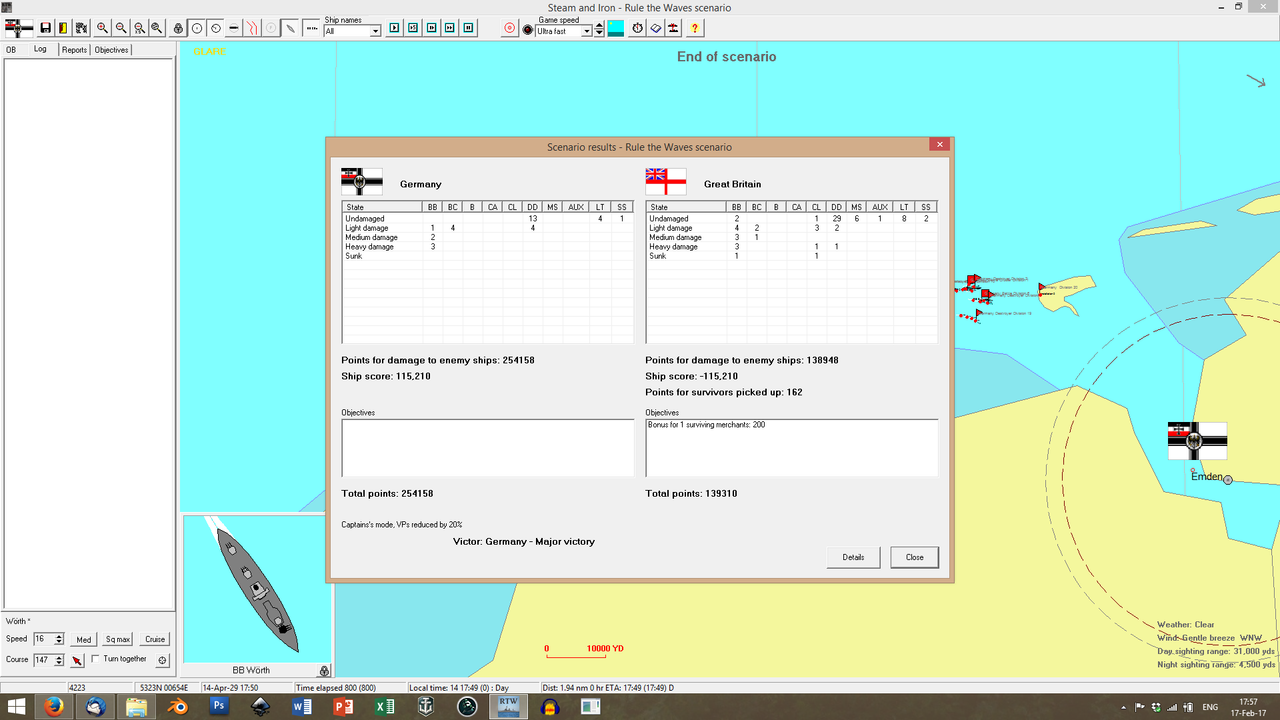
The
Admiralität is quick to claim the battle of Texel as a German victory, given the eventual loss of the
Albion-class
HMS Glory and the old light cruiser
HMS Tribune. However, archive research has led current scholarship to revising that estimate. As first posited by Ian McDonough in his recent (2013) work
Politics and Strategic Thought: The Royal Navy during Mosley's Folly, this was, in fact, the first strategic victory of the Royal Navy in the 1929 war. On the other hand, the aftermath of this battle would have disastrous consequences for the British Fleet and Britain's odds of success in the war.
Let us go into a bit more detail:
Currently, the German
Admiralität is run by two metaphorical colossi, whose feet seem surprisingly fragile:
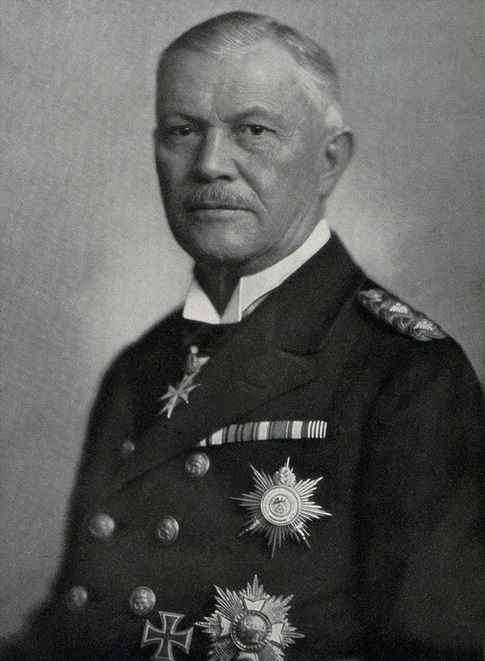
First, Grossadmiral Reinhardt Scheer. At the age of 66, he has been groomed to be Galster's successor. Sadly, his health is failing. His body is giving out on him, and the added stress of managing a wartime navy is not helping. Thankfully, his mind is still sharp and up to the task of handling the strategic oversight of Germany's
Hochseeflotte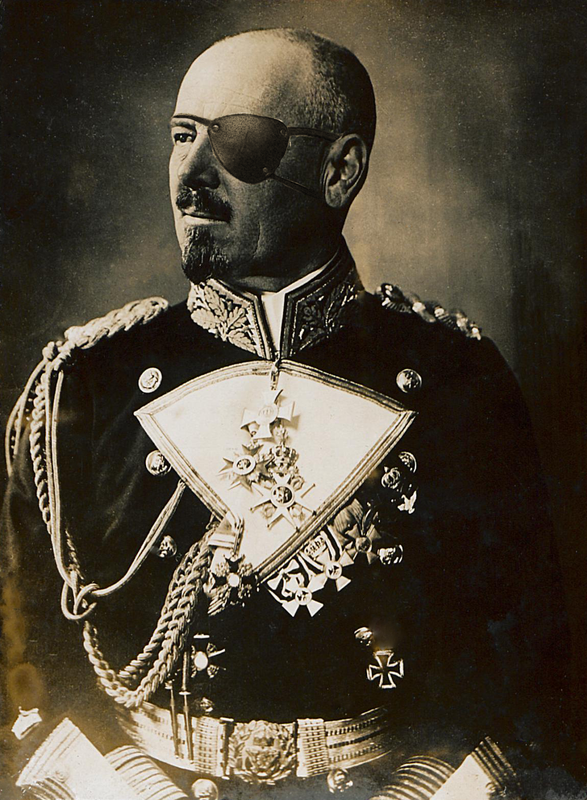
Second, Admiral Franz von Hipper. He is younger than his superior, but his own health is problematic. He is a cripple, having lost his left eye, left hand and left leg below the knee in an earlier surface action, when the conning tower of his flagship was penetrated by enemy fire; and his wartime wounds are a constant near-torture to him. But he is, hands down, the best tactical officer the German navy has.
The problem with these two officers is that they still operate with the mindset of the
Schlachtkreuzer commanders of old. They are looking for opportunistic fights, against enemy forces equal or lesser to them in numbers - fights that they can win thanks to their ships' inherent qualitative superiority. But Germany's fleet is becoming increasingly focused around her
Schlachtschiffe: a force that the British ships can engage at will, given the Germans' insistence on a 25 knot speed for their behemoths. However, given past experiences, the Germans are
not expecting the entirety of the Grand Fleet to come down their throats - they have never
experienced a battle such as this. For them, it is an out-of-context problem.
The German
Schlachtschiffe have been designed to stand up to the fire of one or 1.5 enemy dreadnoughts each, based on the experiences of the German
Schlachtkreuzer in previous wars. But what happens if your opponent realises that the tenets of the previous wars no longer apply?
Enter the genius of Admiral Hubert Brand, Commander-in-Chief of the Atlantic Fleet.
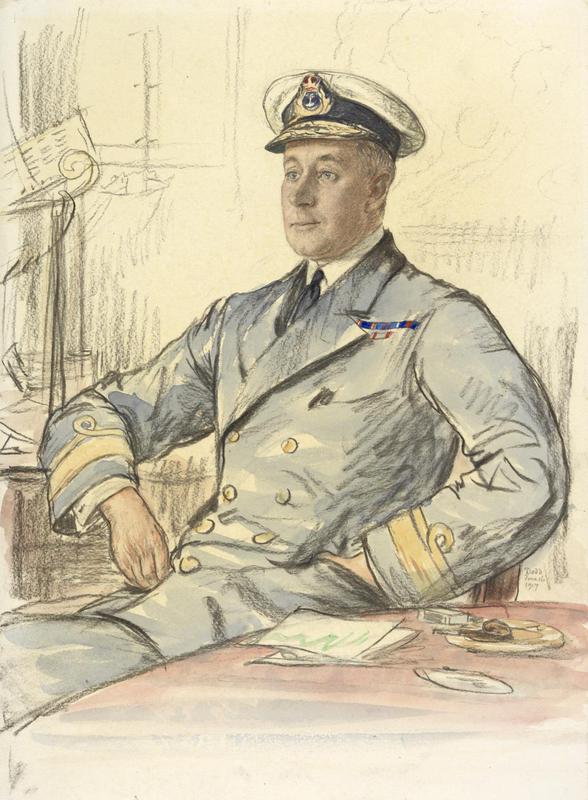
Brand was an officer of the Old School, a veteran of the Anglo-German war, and a man with little patience for Mosley's policies. He had foreseen the war and had taken the necessary measures to counter what he thought was the core of the German fleet.
He had served as a Naval Secretary, during the rise of Mosley and his calls for a strengthening of the British coastal patrol fleet had fallen to deaf ears. He had been, eventually, side-moted into his command of the Antlantic Fleet, to keep him out of the Naval Bureau's politics. In response, he had proceeded to reorganise the old ships of his command into a massed fighting force, abandoning several patrol areas considered 'key' to gather a sufficiently large fleet-in-readiness.
"We have no response to the German submarines," he writes in an internal service memo. "We have done our utter worst, to ensure that. It is now too late to even try. No last-minute half-measures will save us. We must seek victory elsewhere."
His answer to the problem? Destroy the
other effective half of the German fleet: her capital forces. Push hard into German waters with a task force large enough to overwhelm the few super-ships that the Germans can bring to bear.
This is what leads to the Battle of Texel. It is Brand himself, from the conning tower of
HMS Goliath who guides his forces against Hipper.
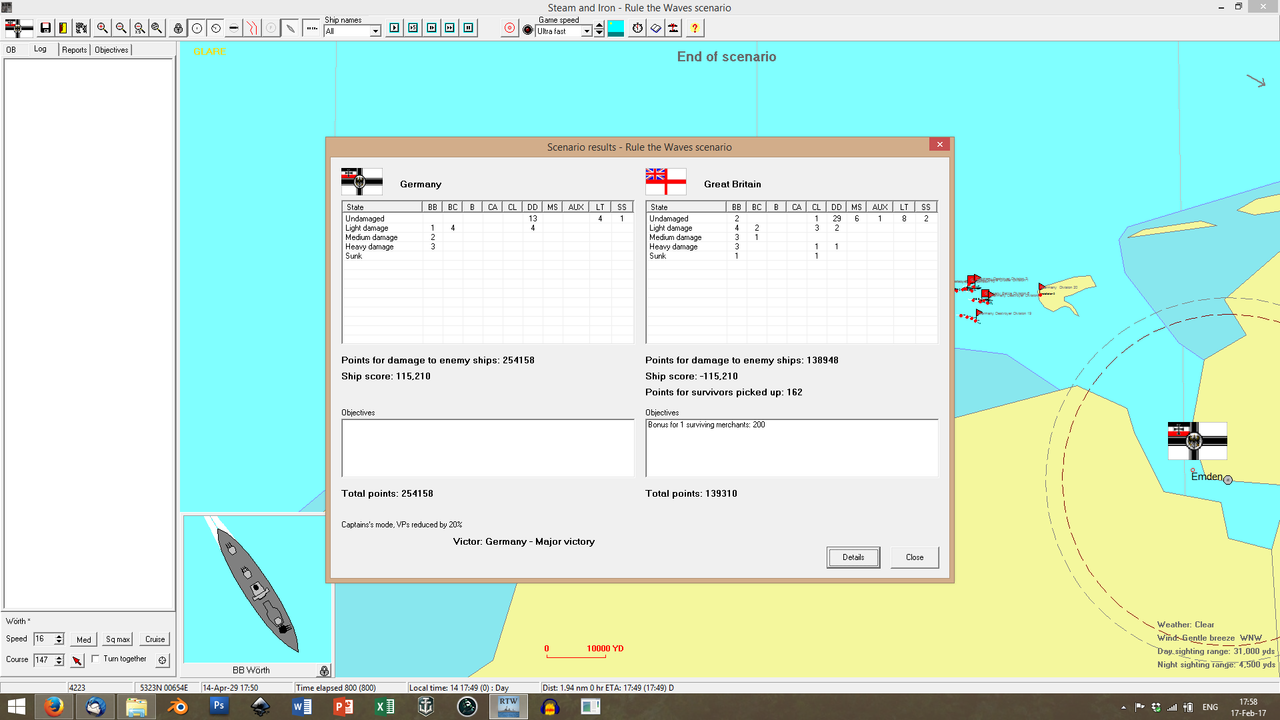
Against the six
Schlachtschiffe and the four elderly
Schlachtkreuzer of Hipper, Brand arrays
thirteen dreadnoughts and three modern battlecruisers. And, despite the loss of the
Glory and the
Tribune (both relic ships), Brand succeds in achieving something that no British admiral of the 20th century has
ever accomplished.
He sends Hipper running.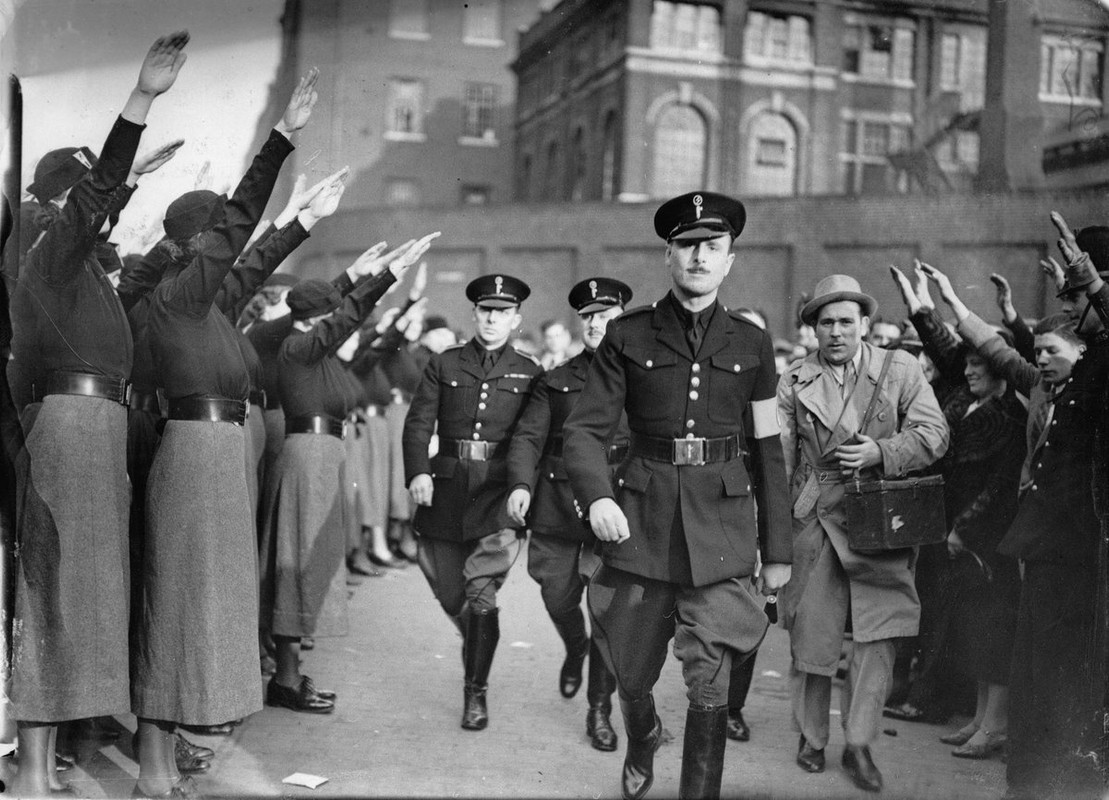
Unfortunately for Brand, being successful as an outspoken (past and current) critic of the regime was
not conducive to one's good health in Mosley's Britain.